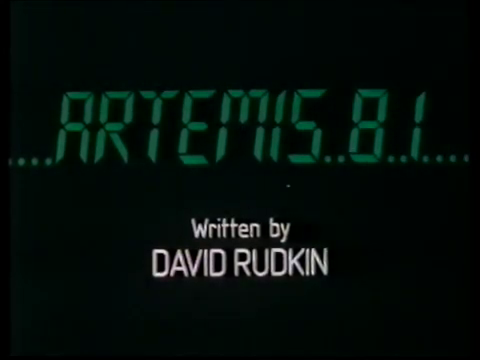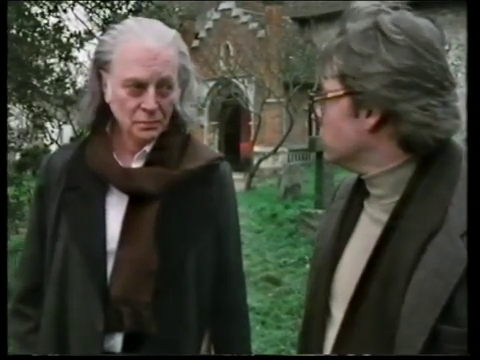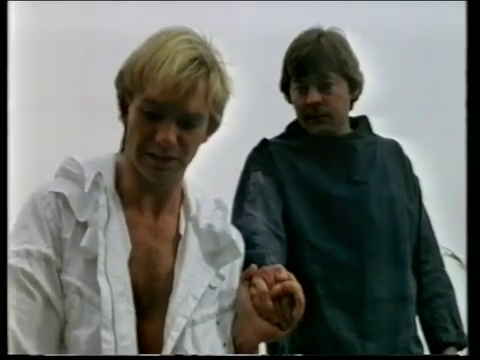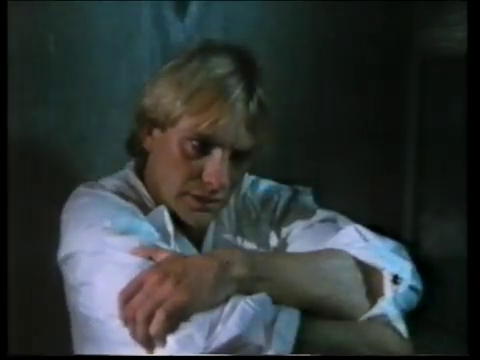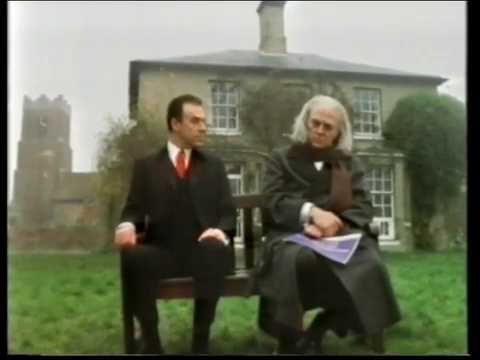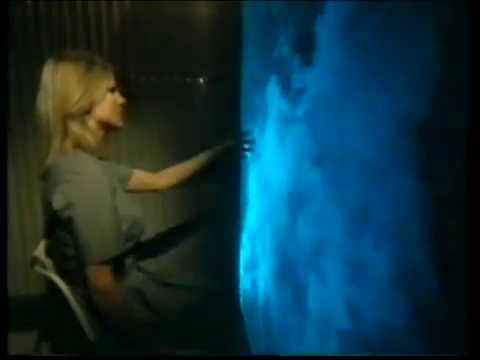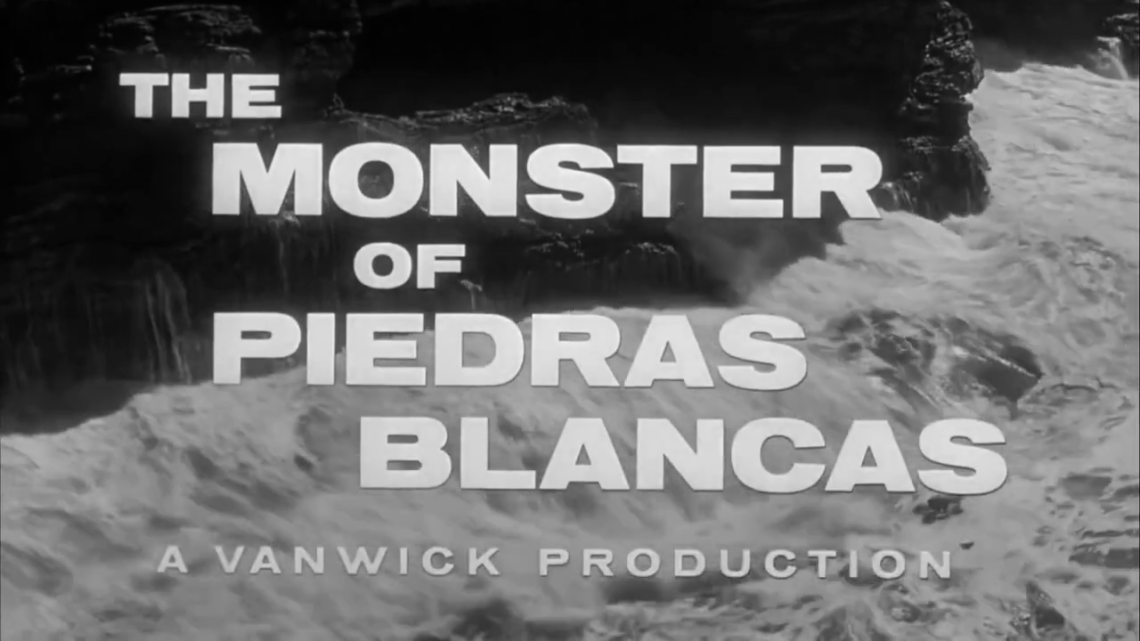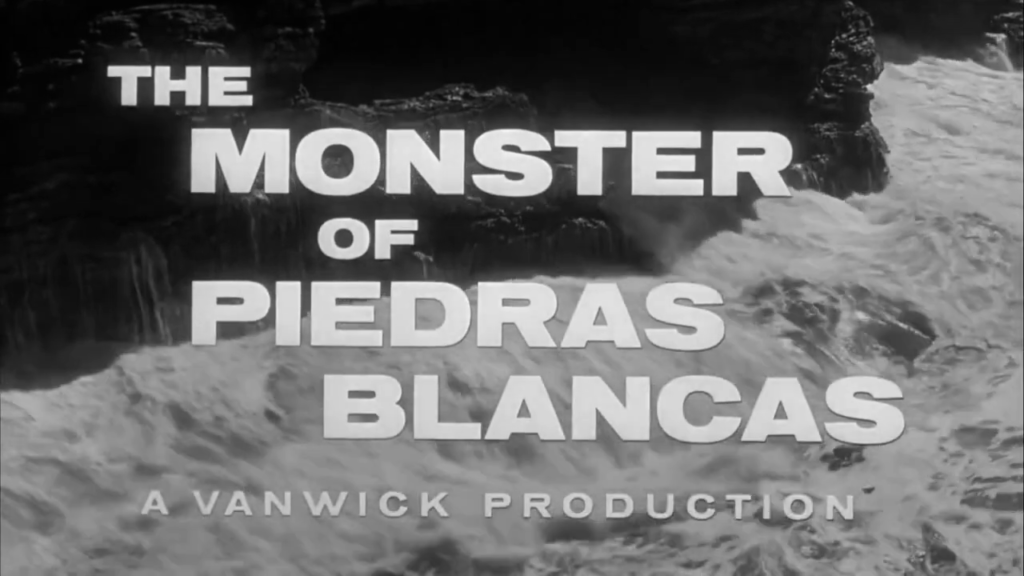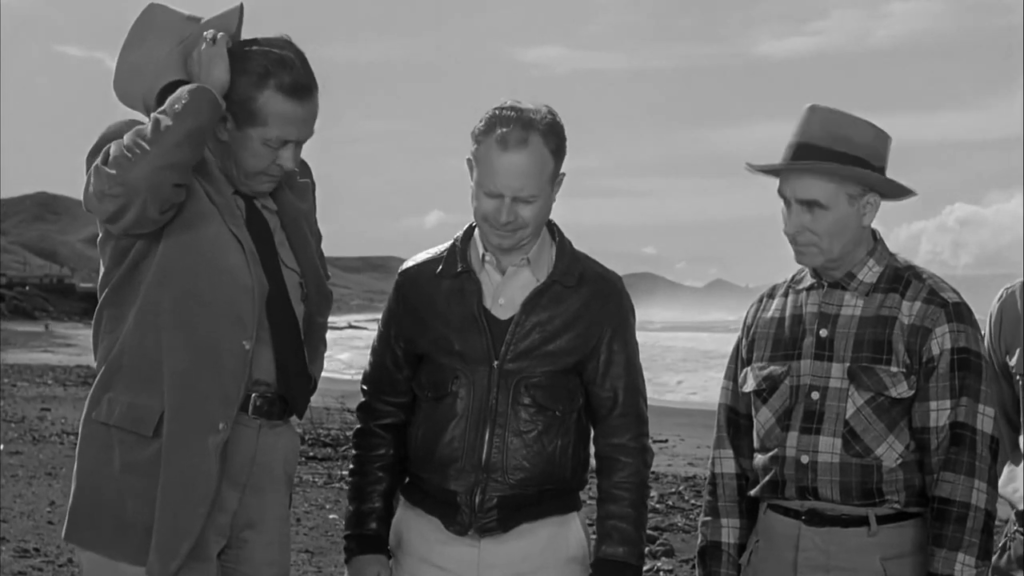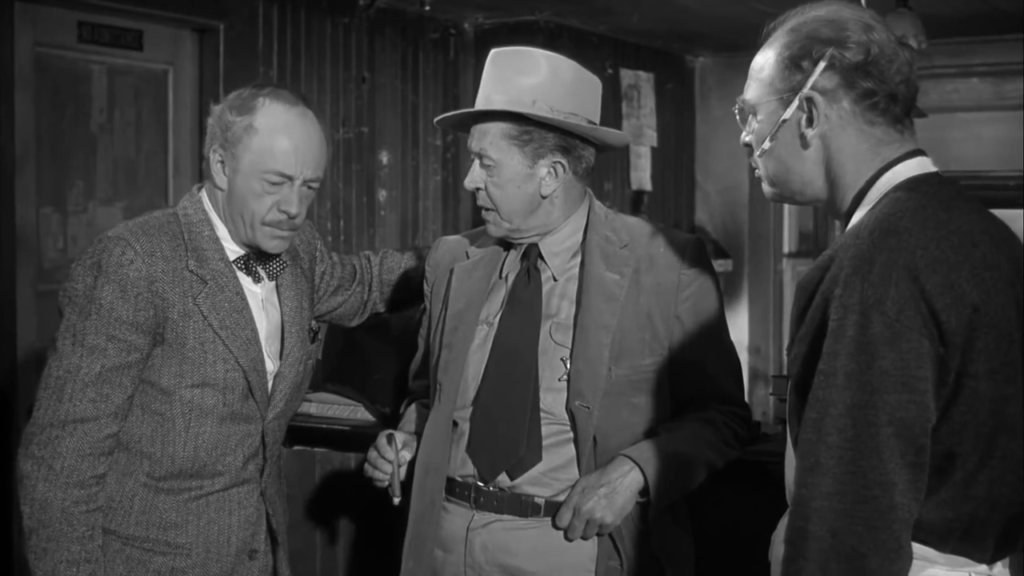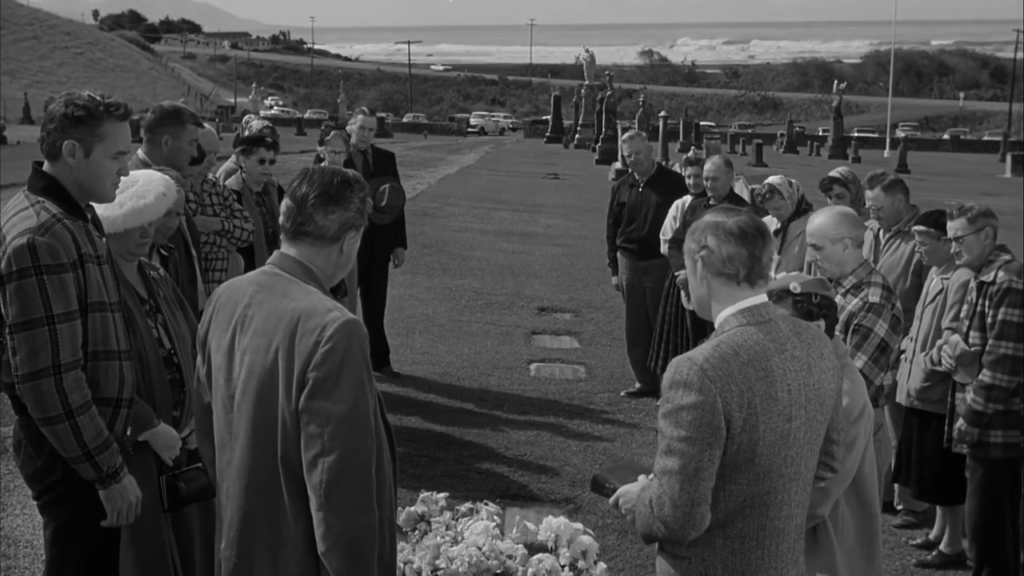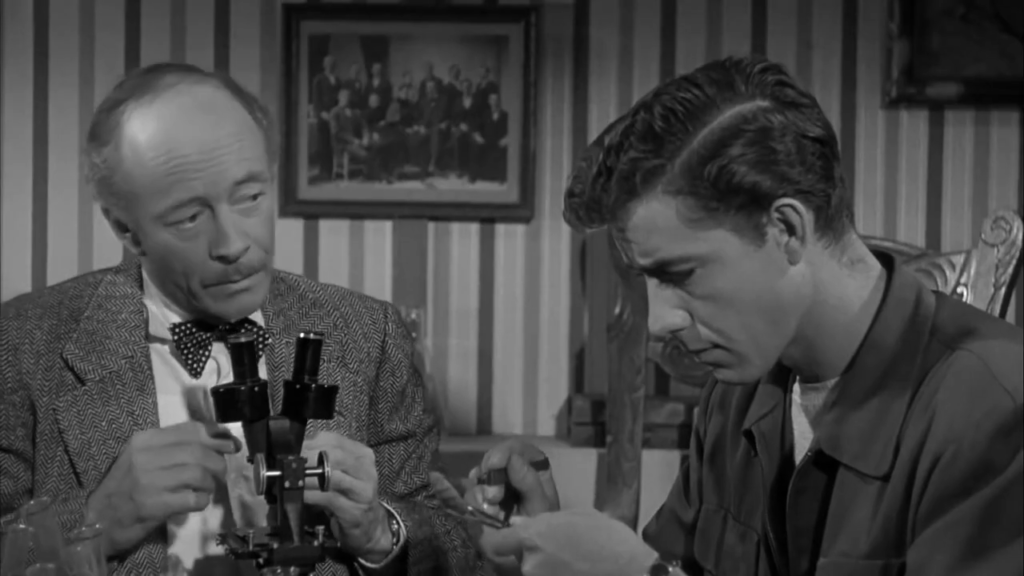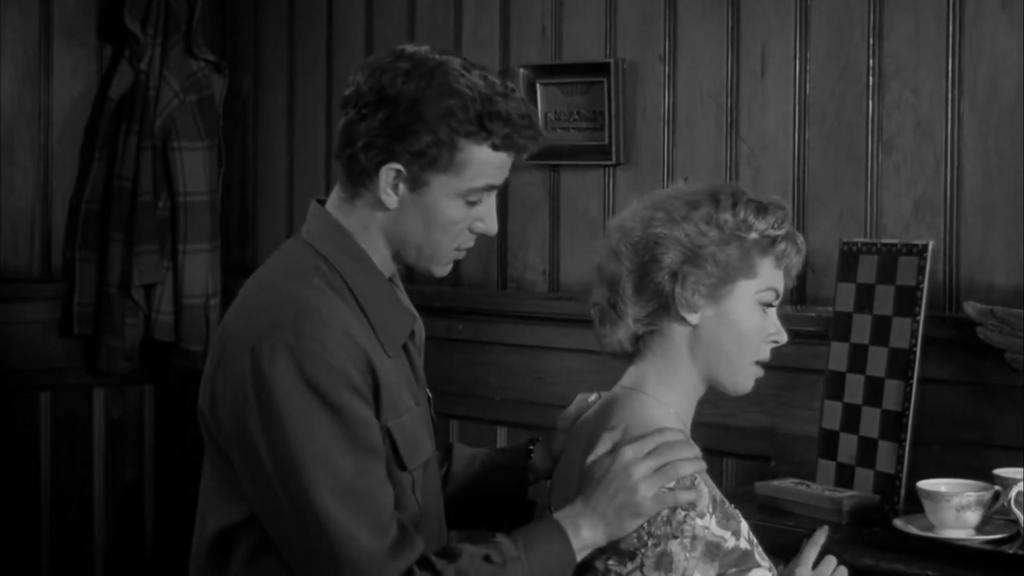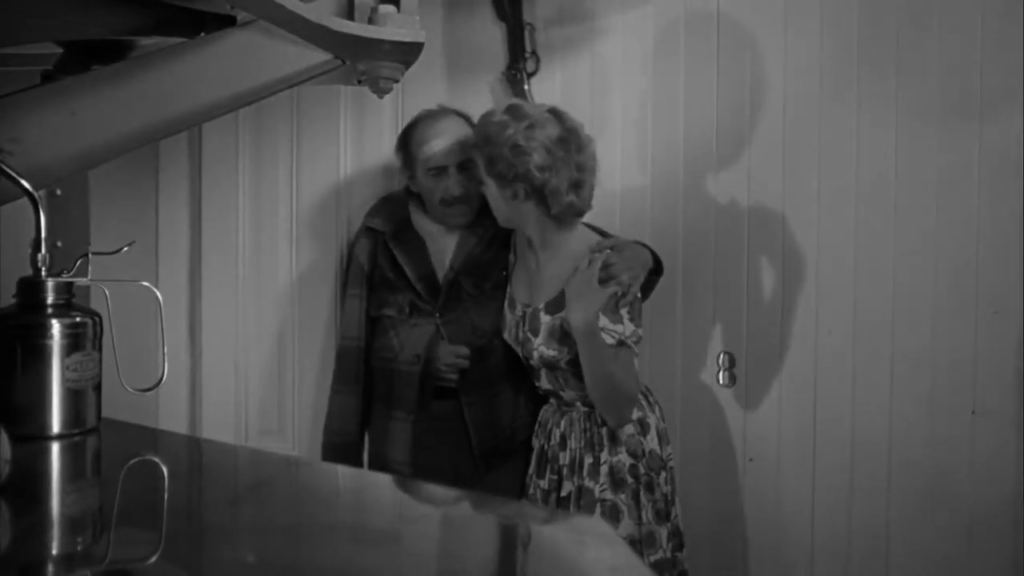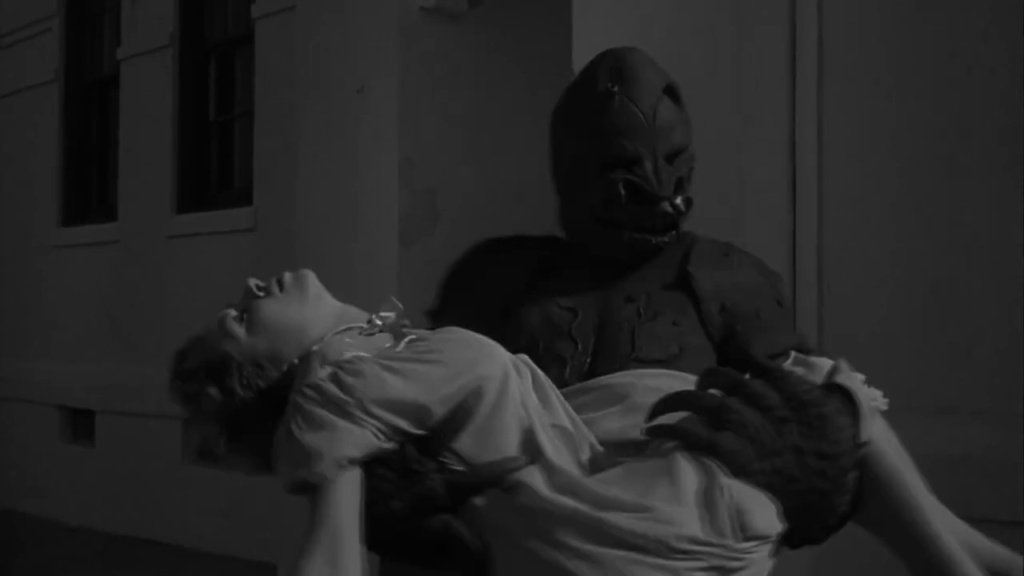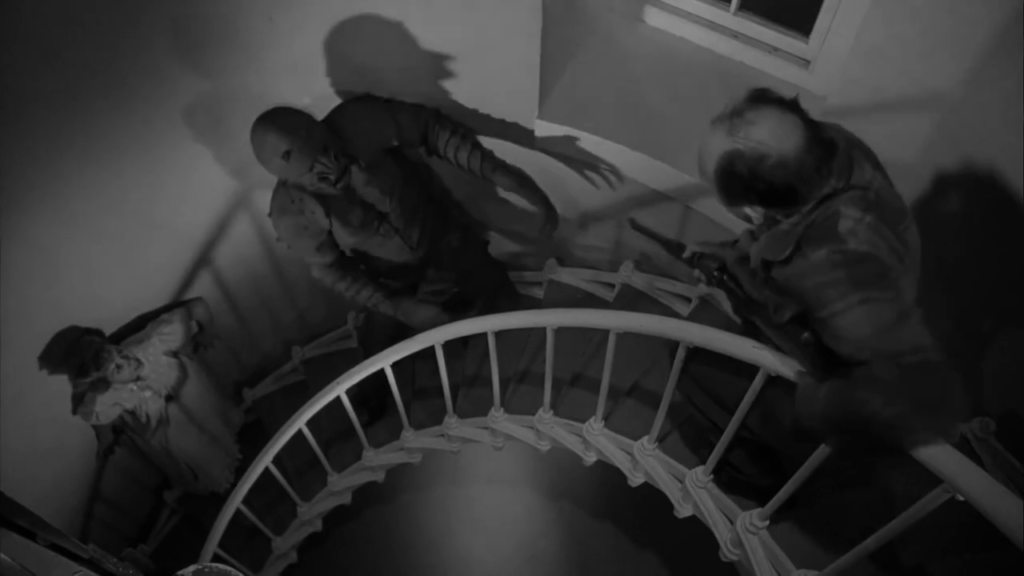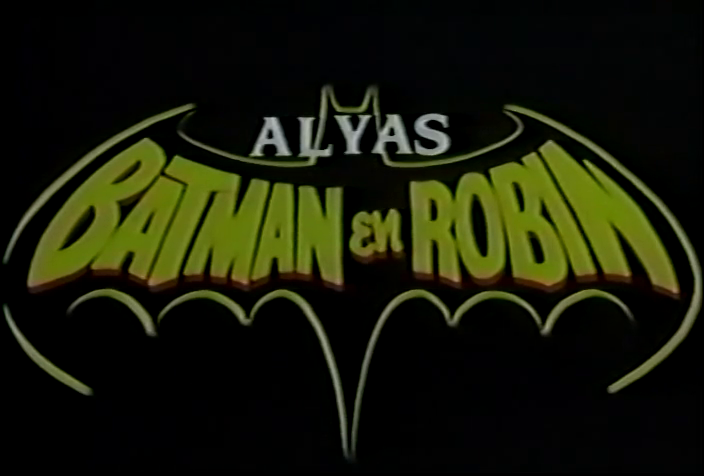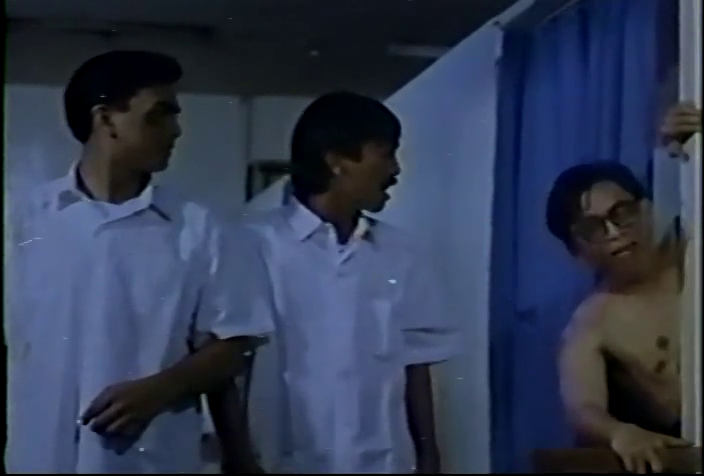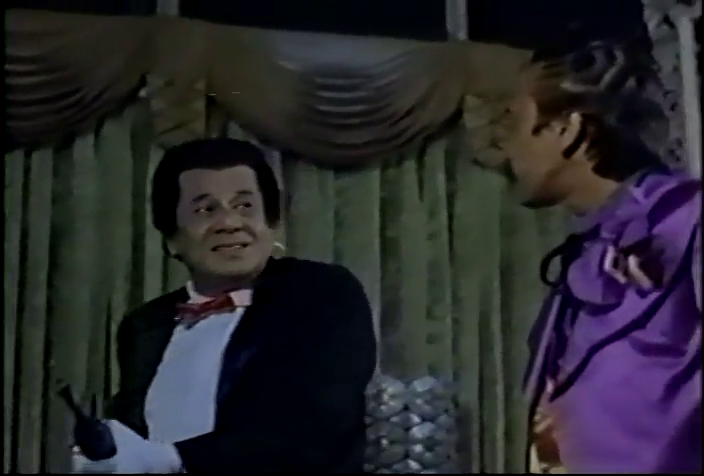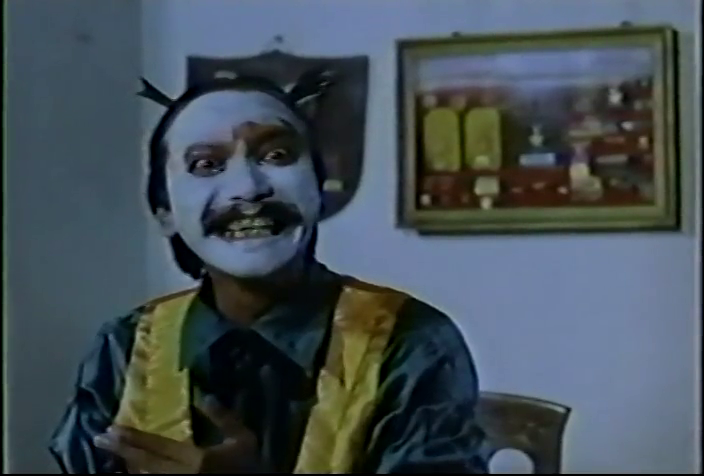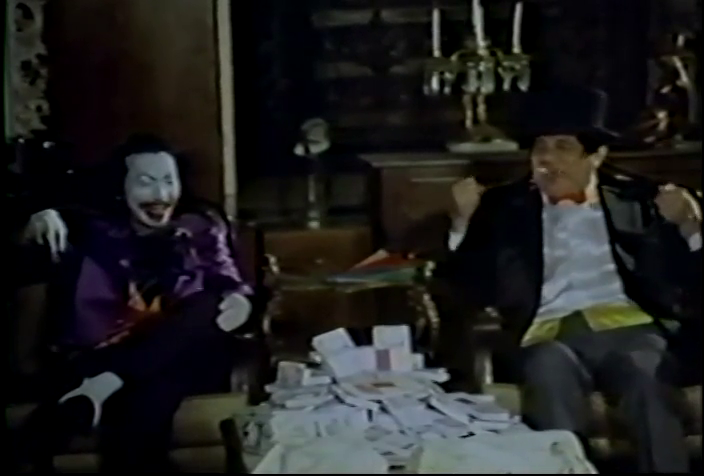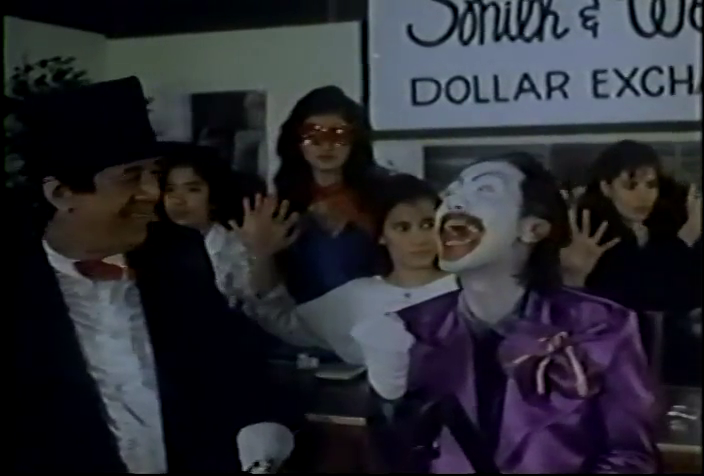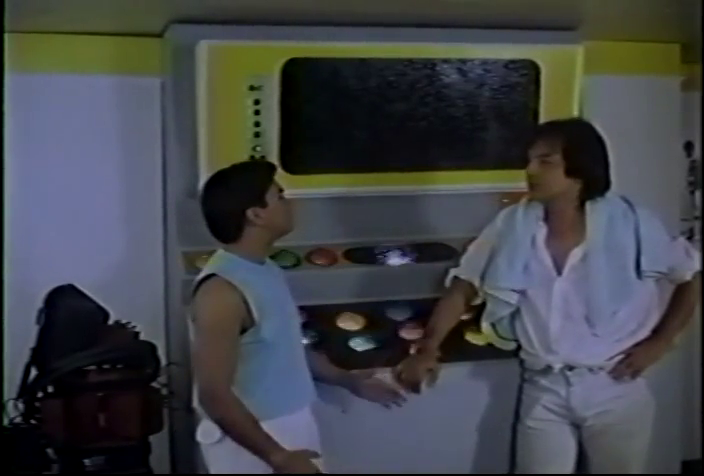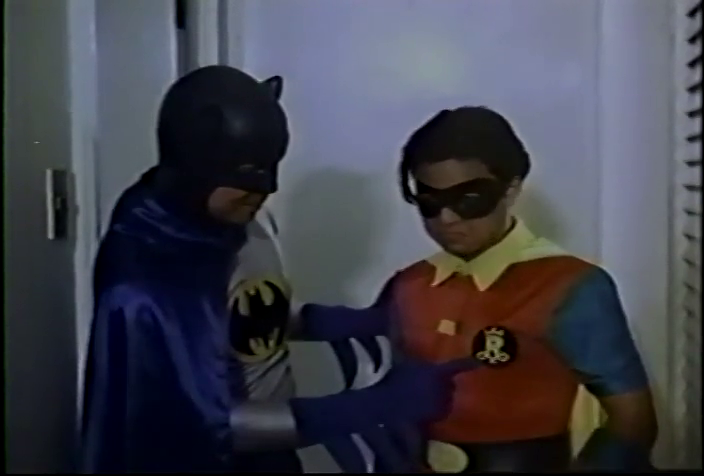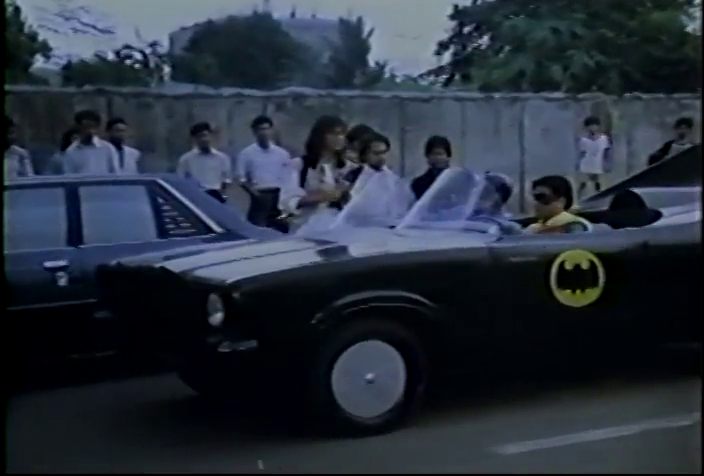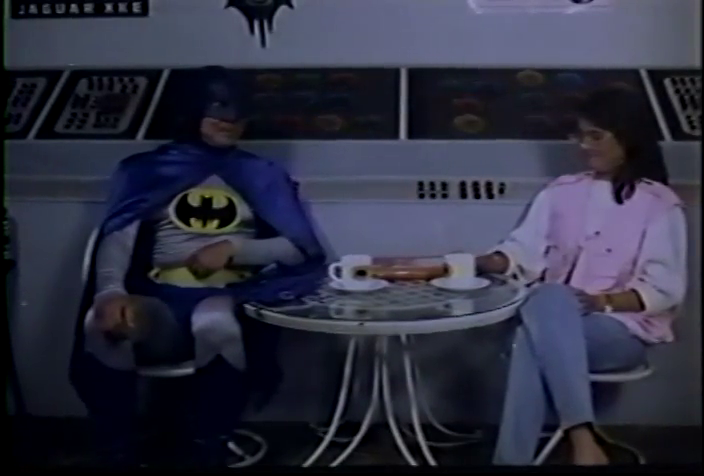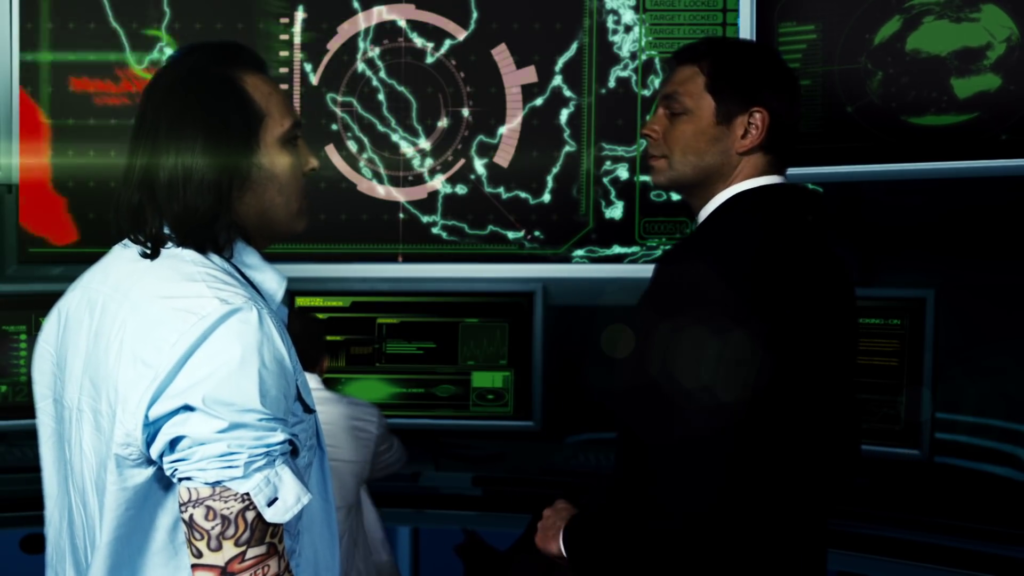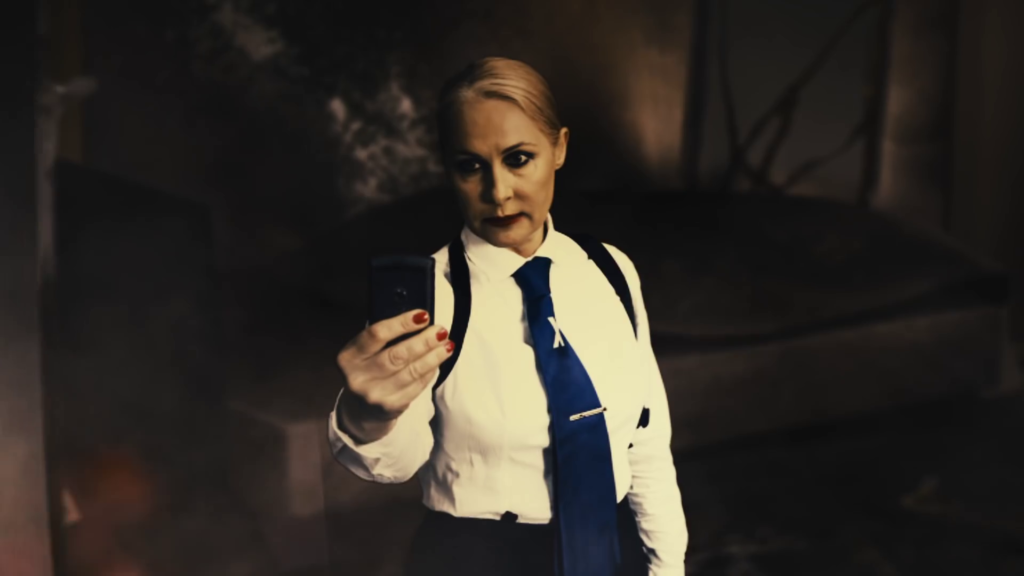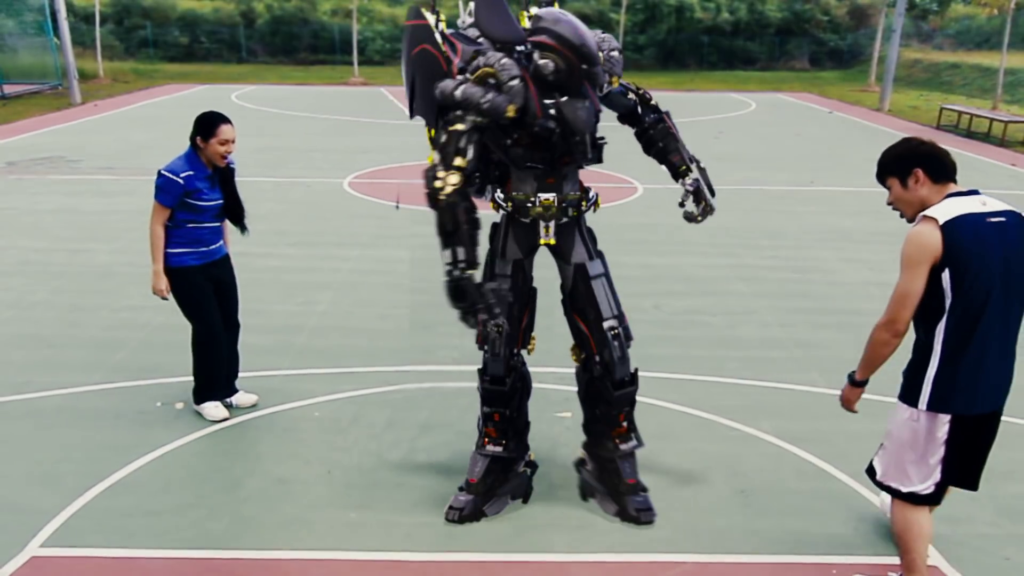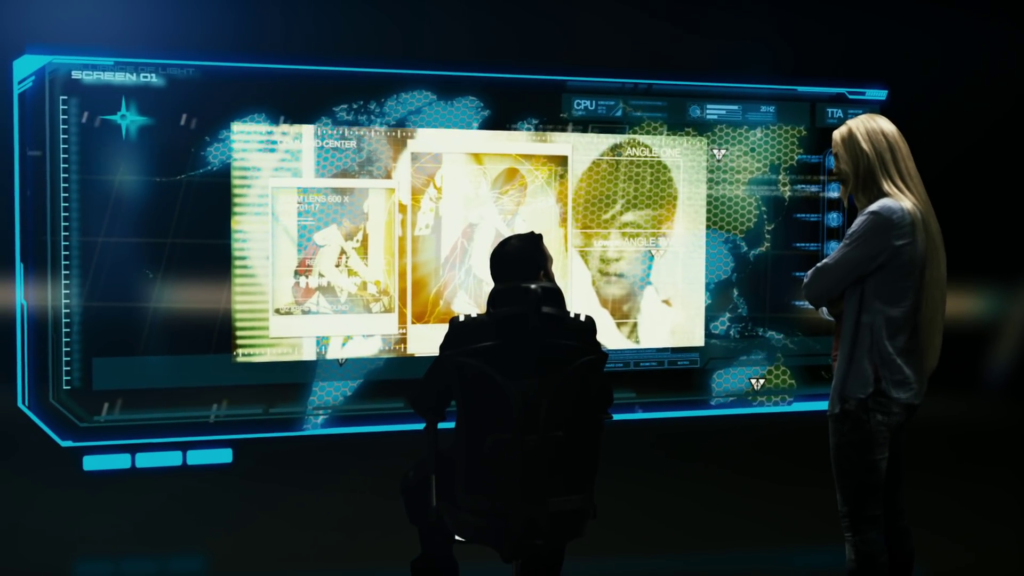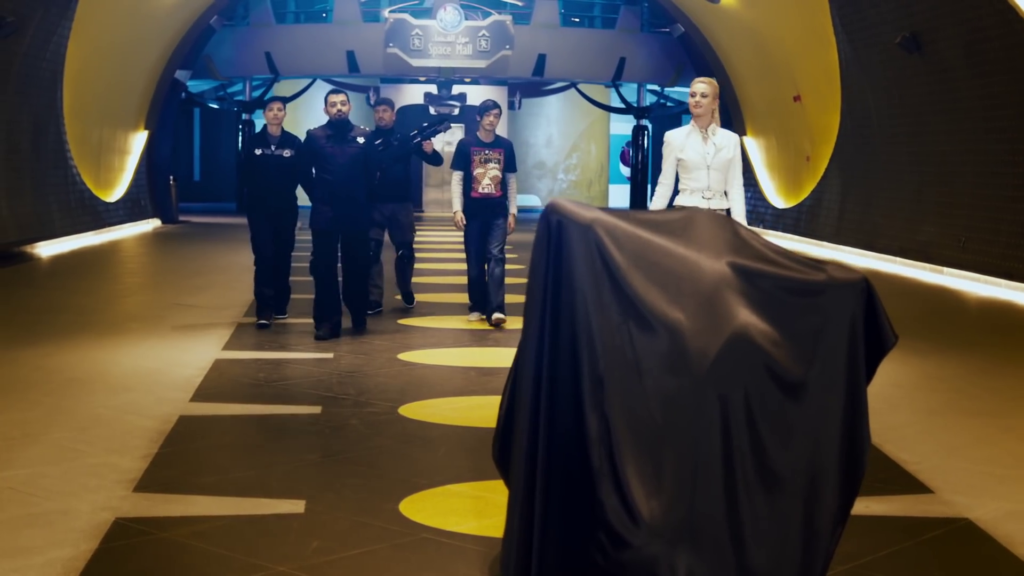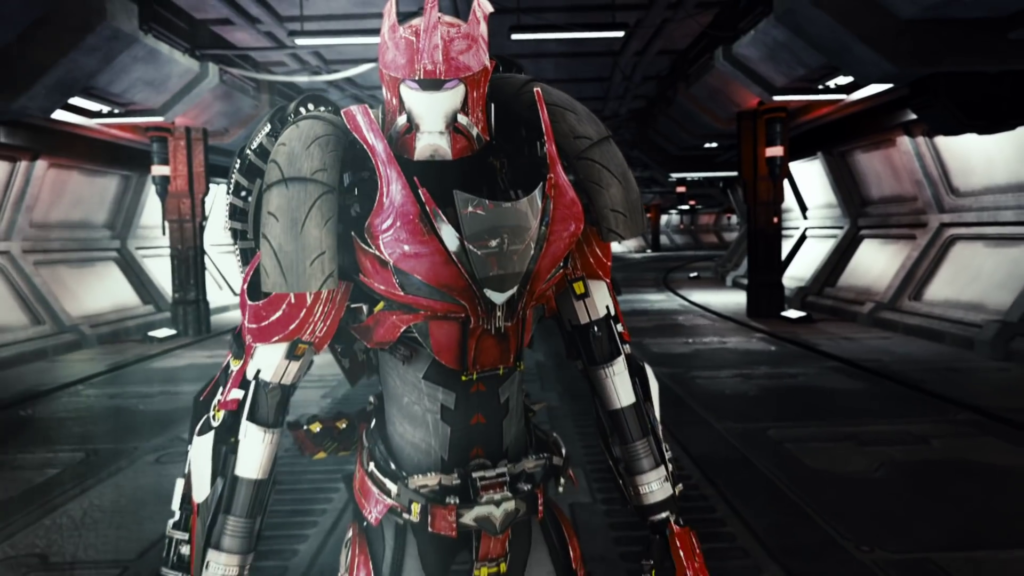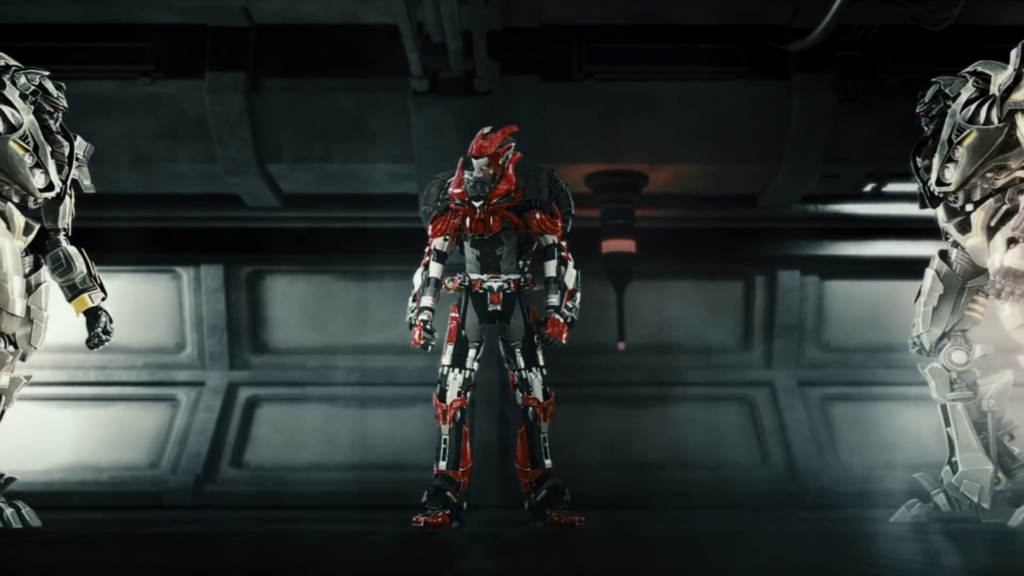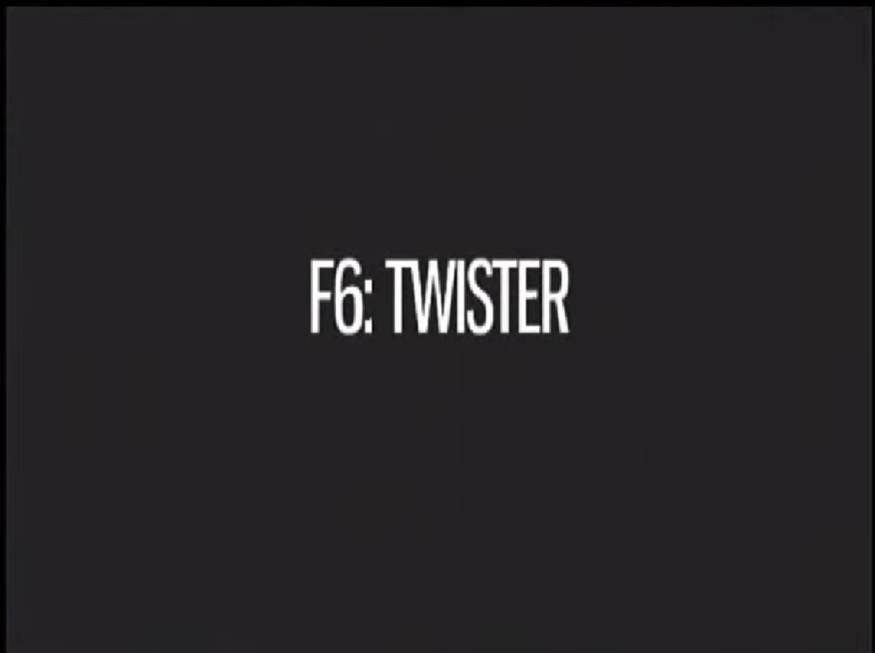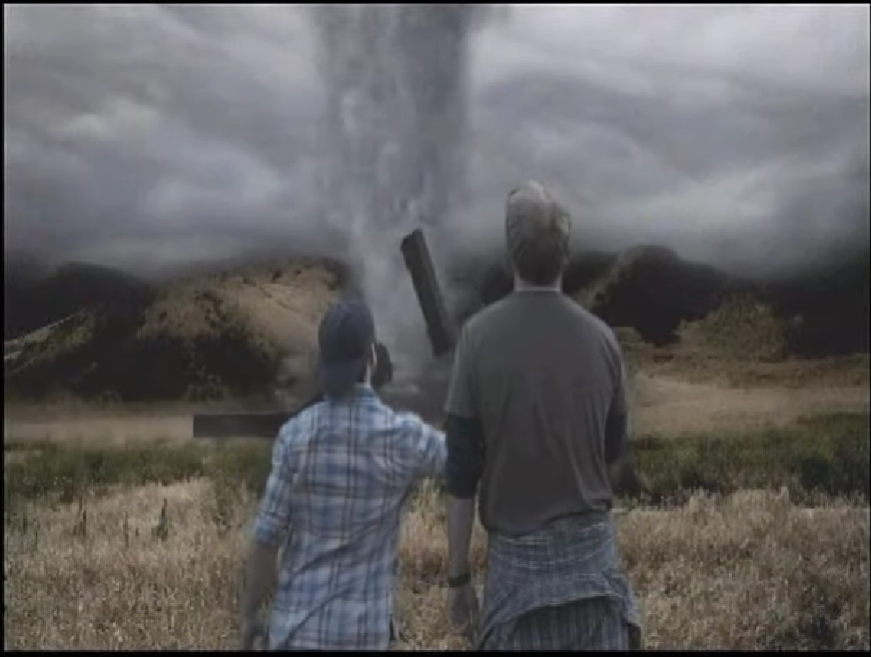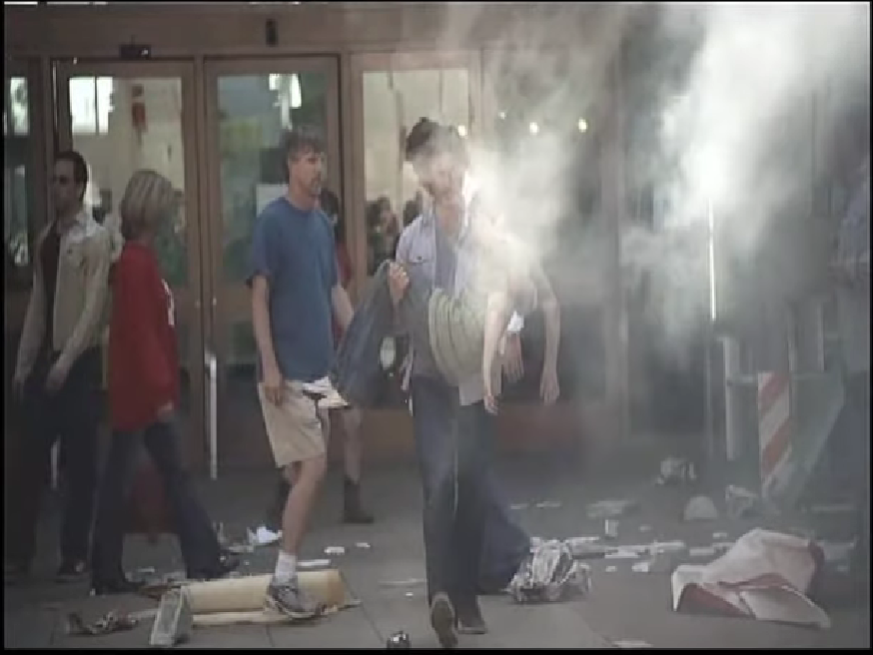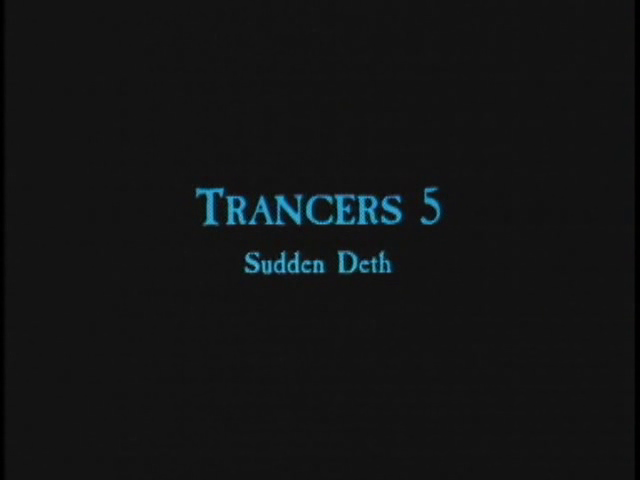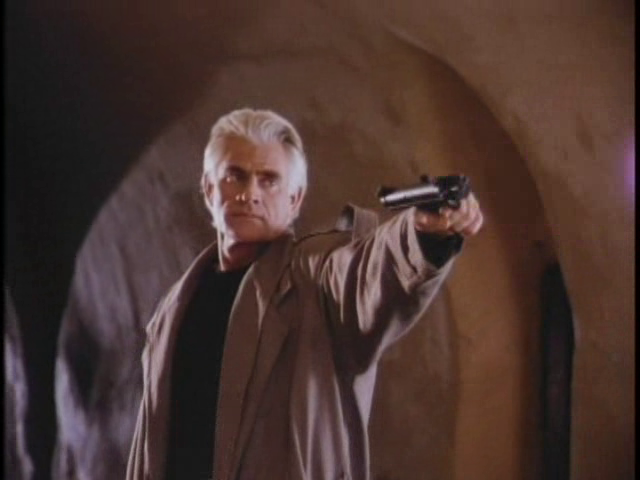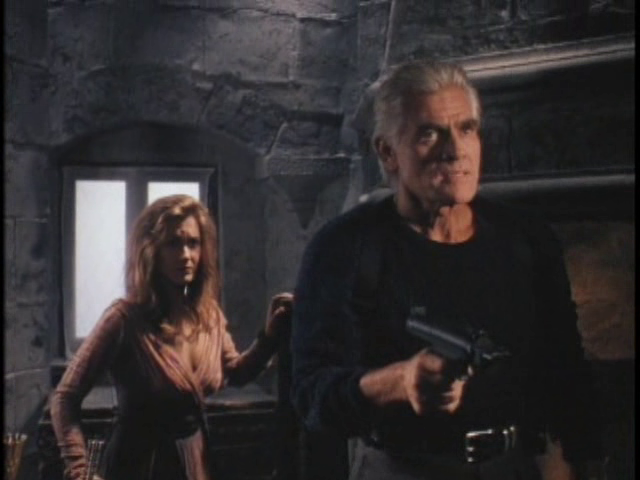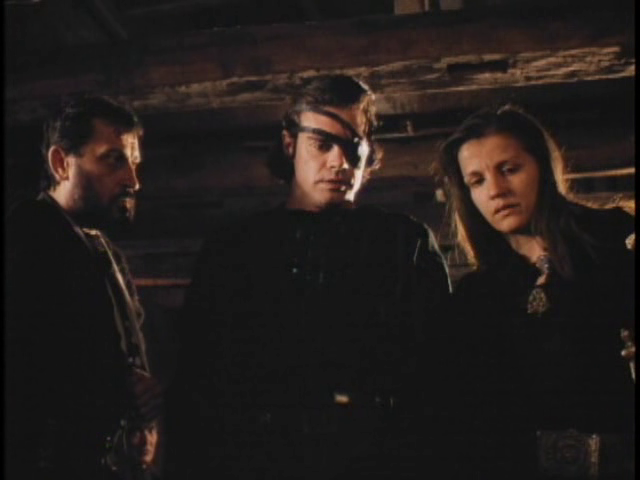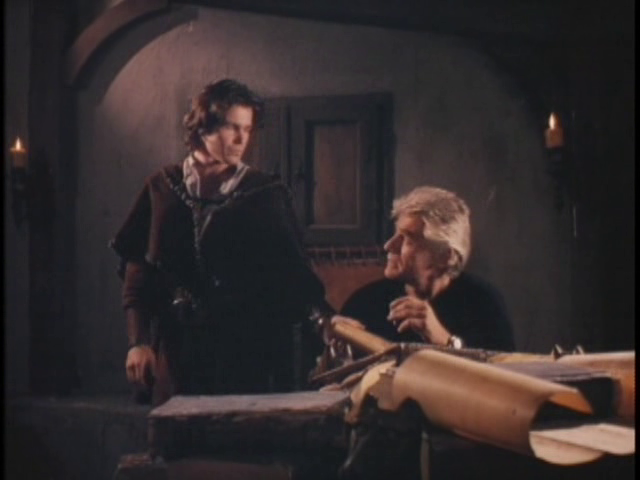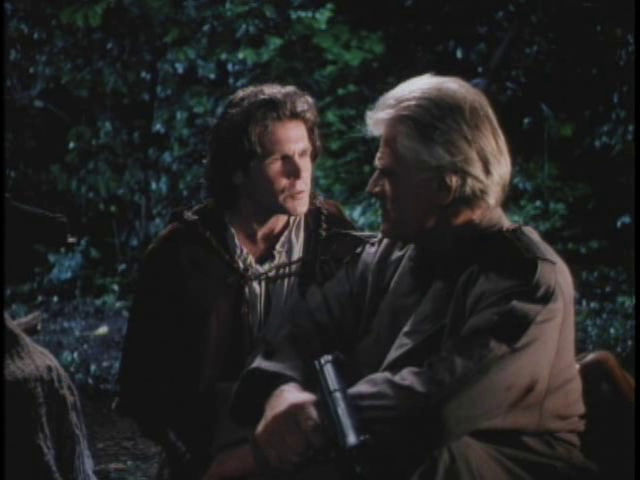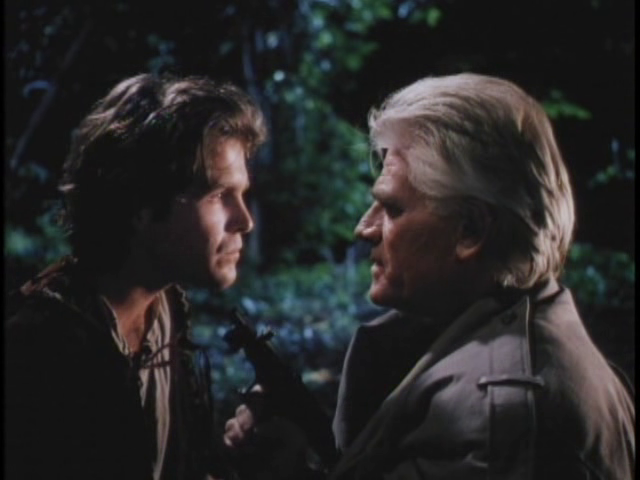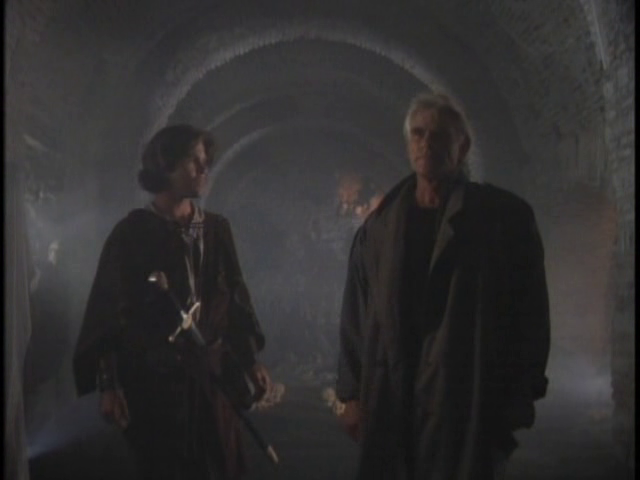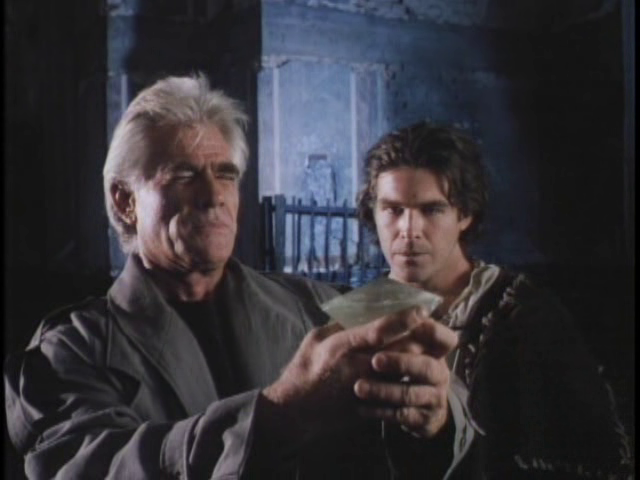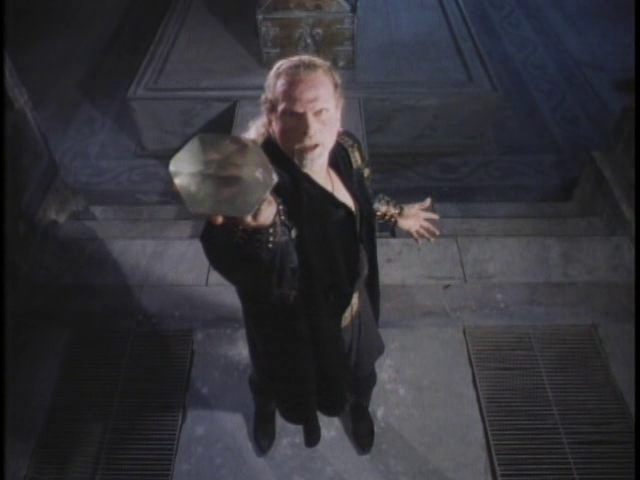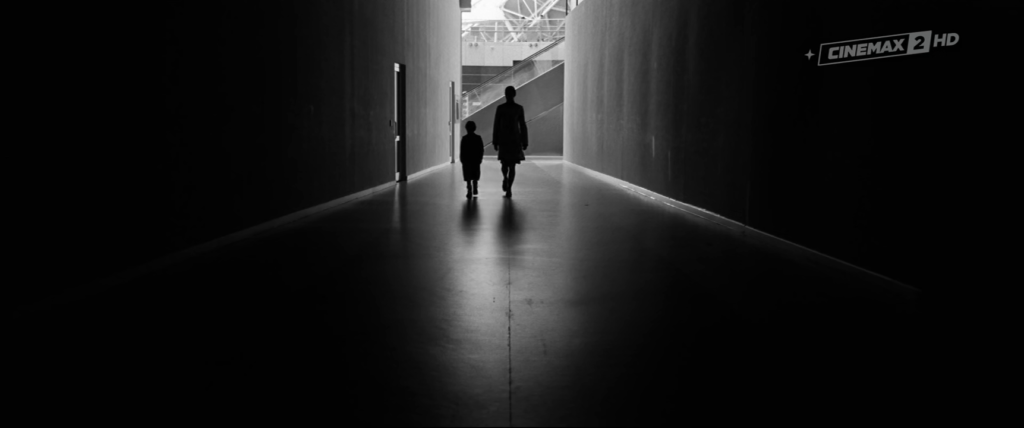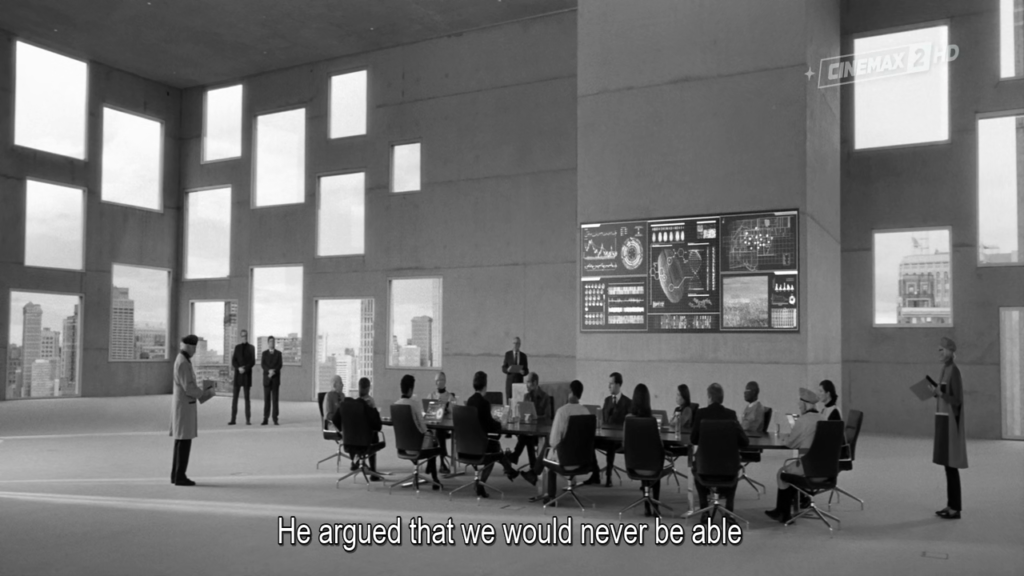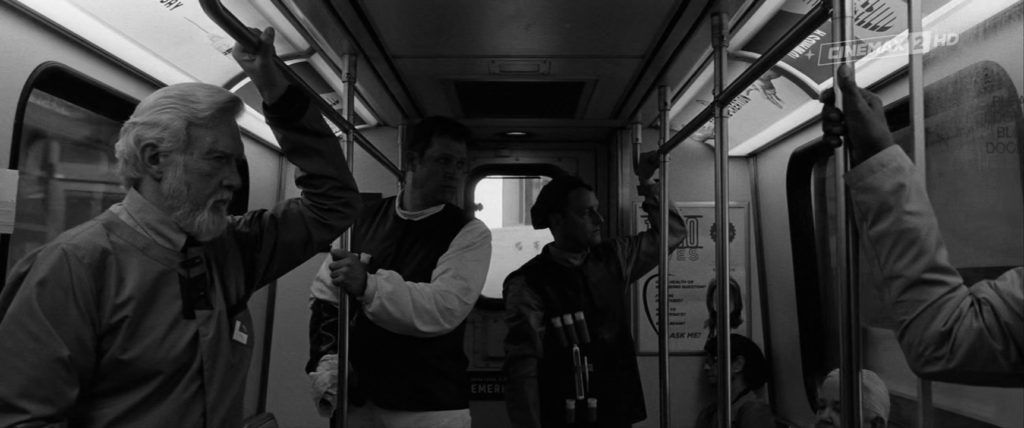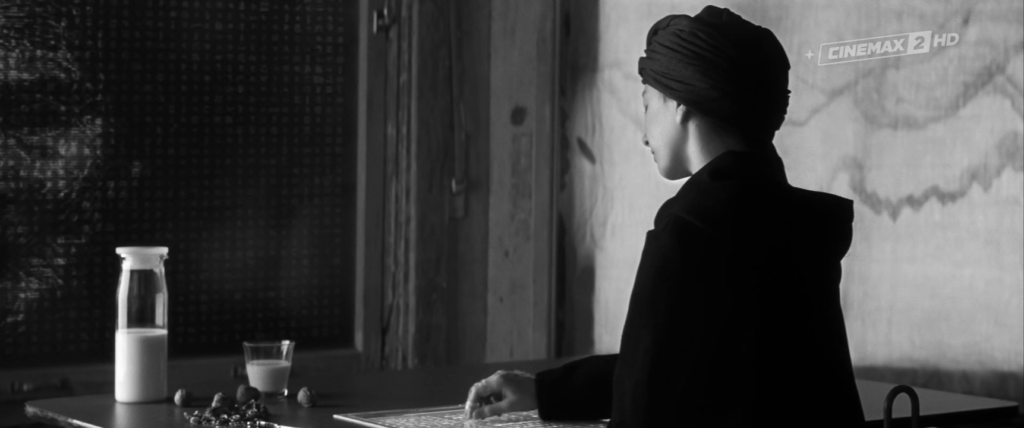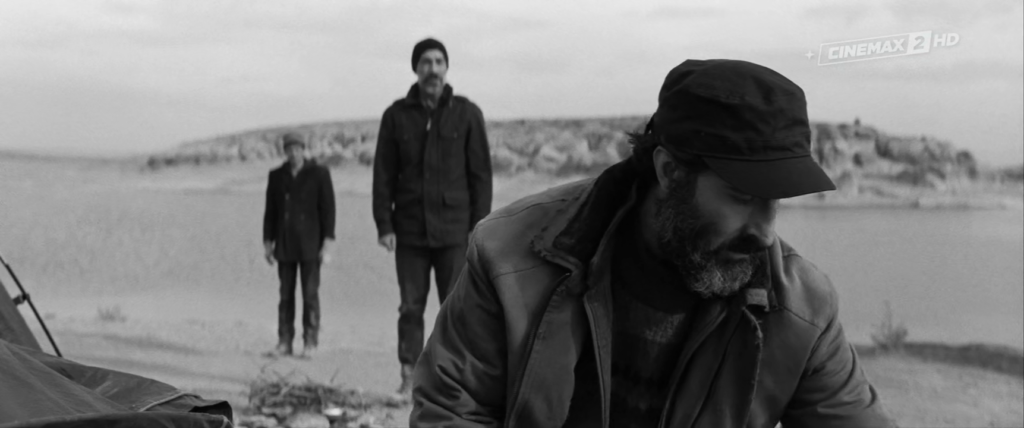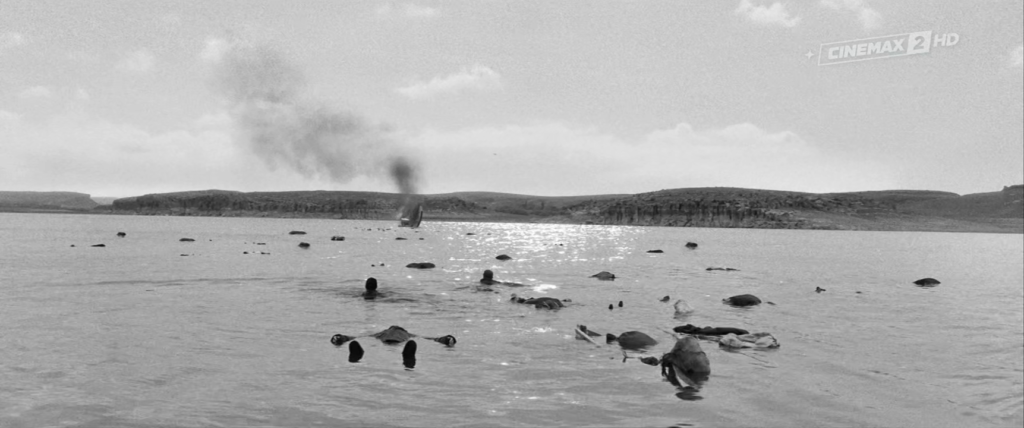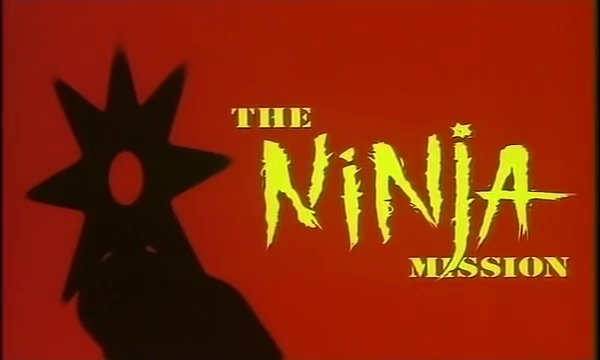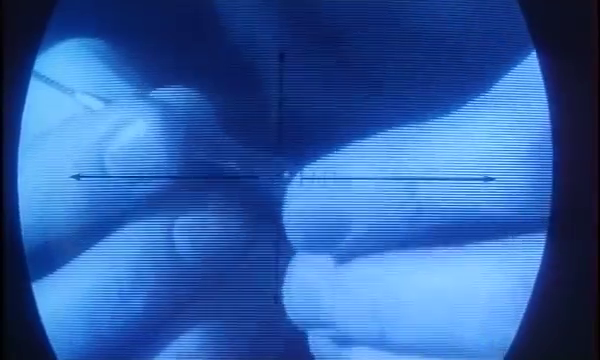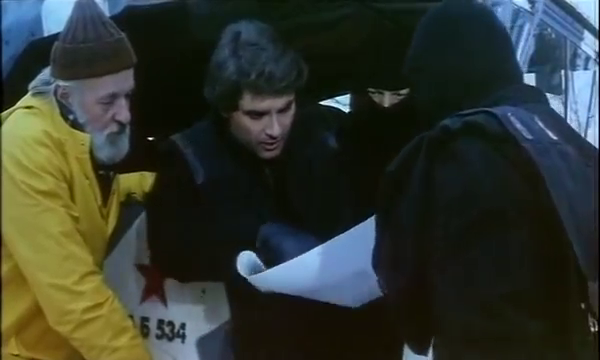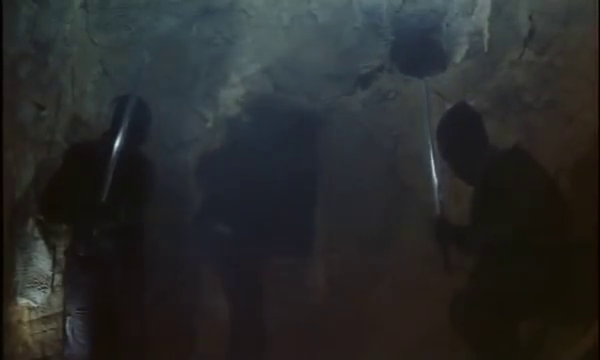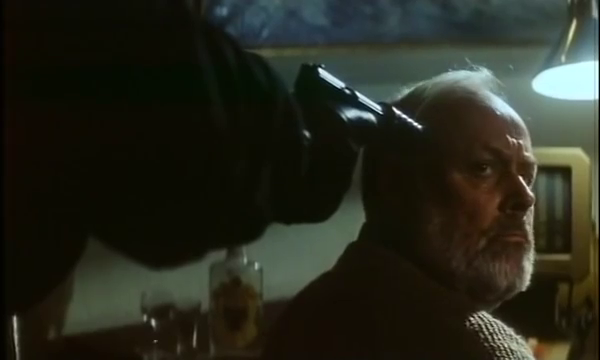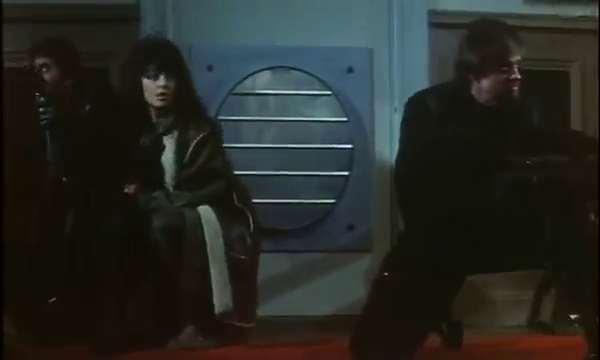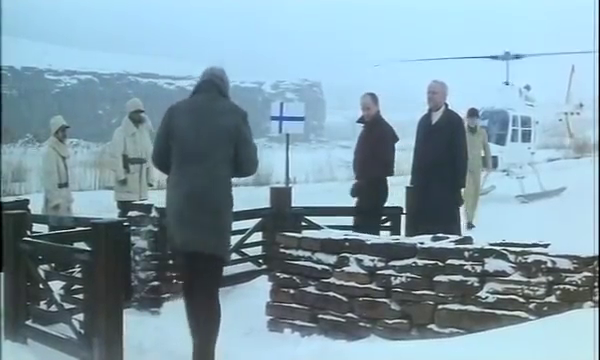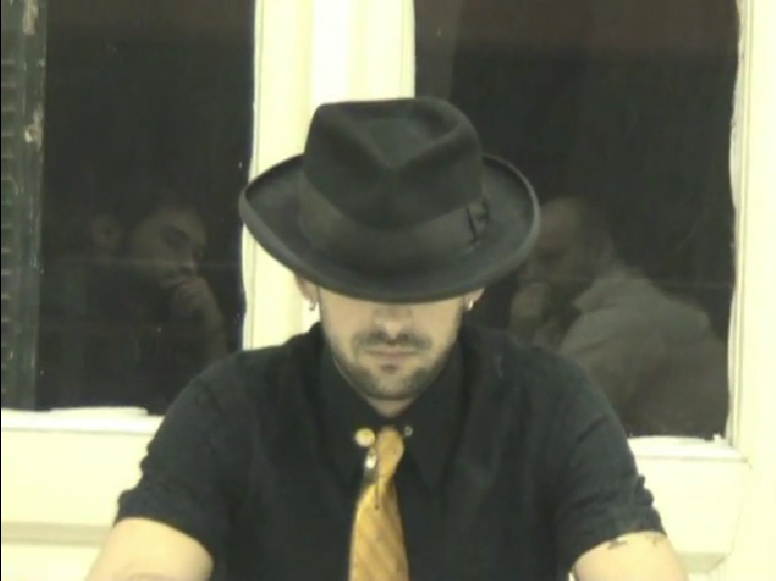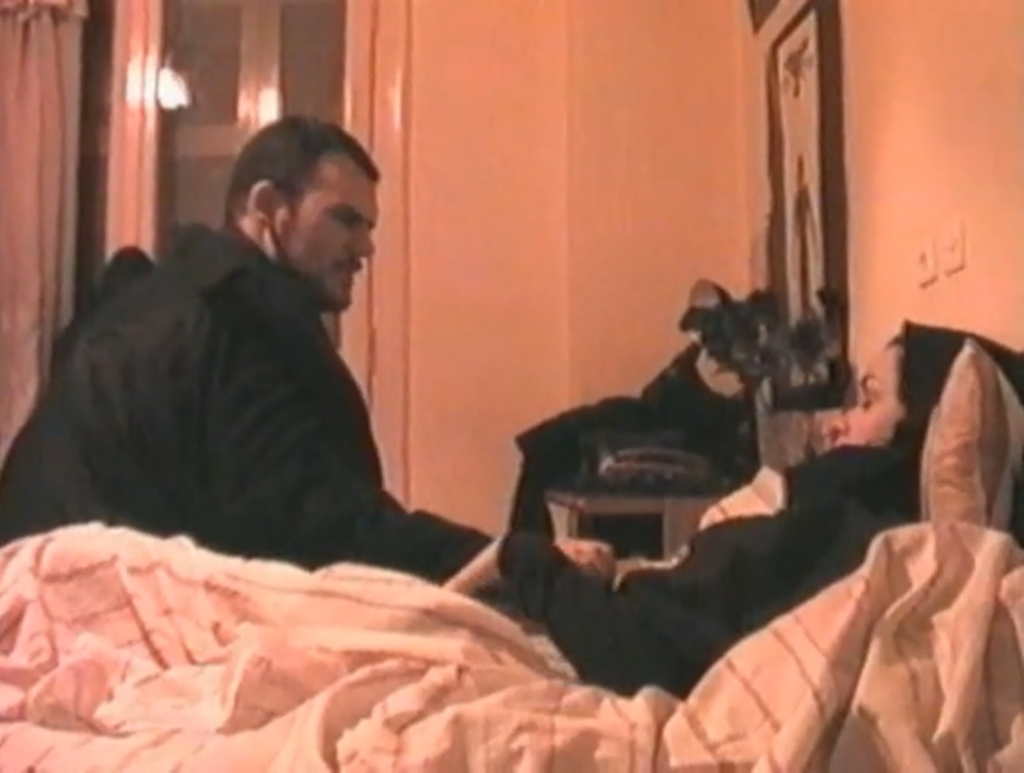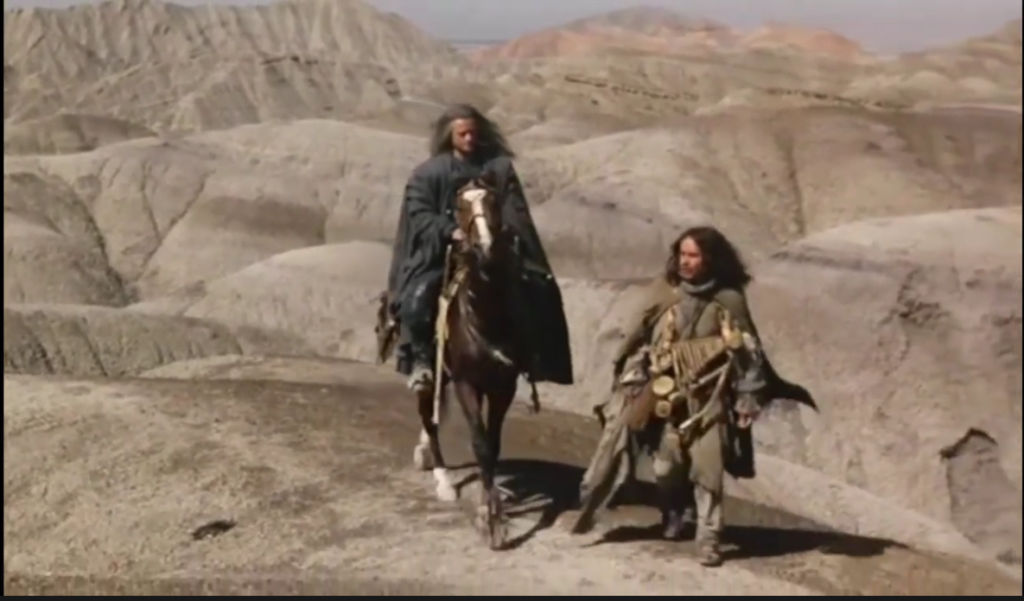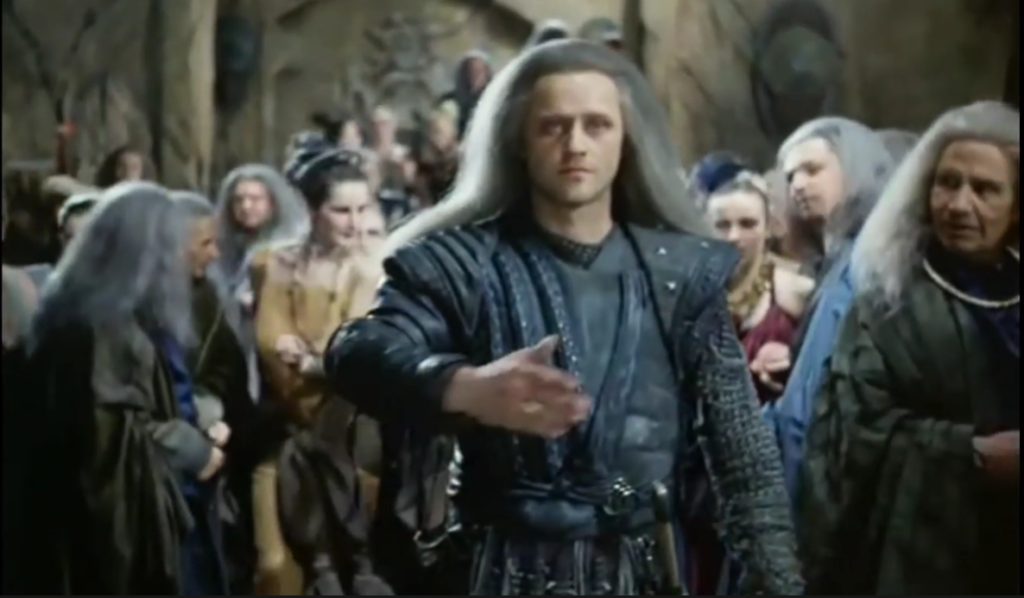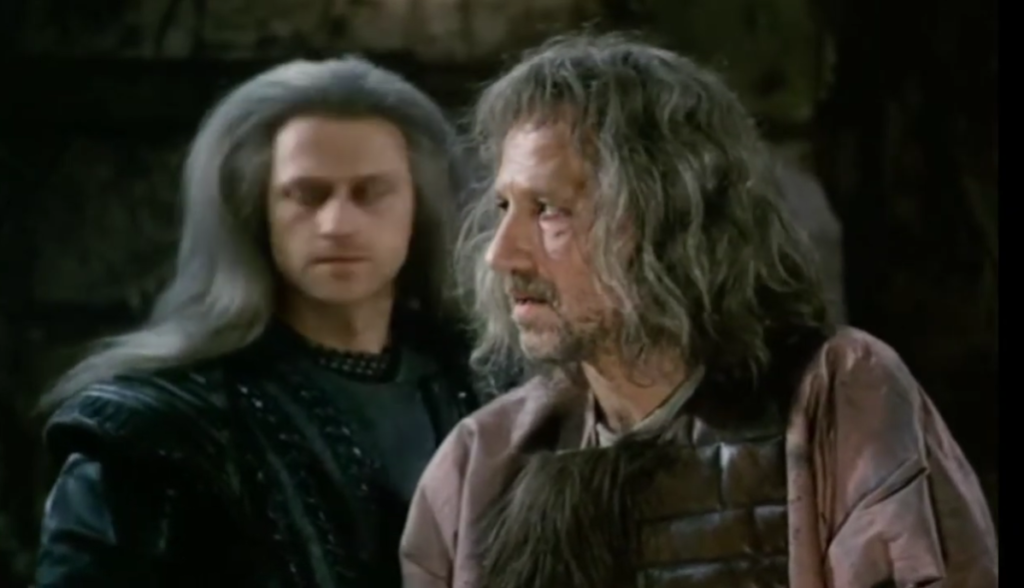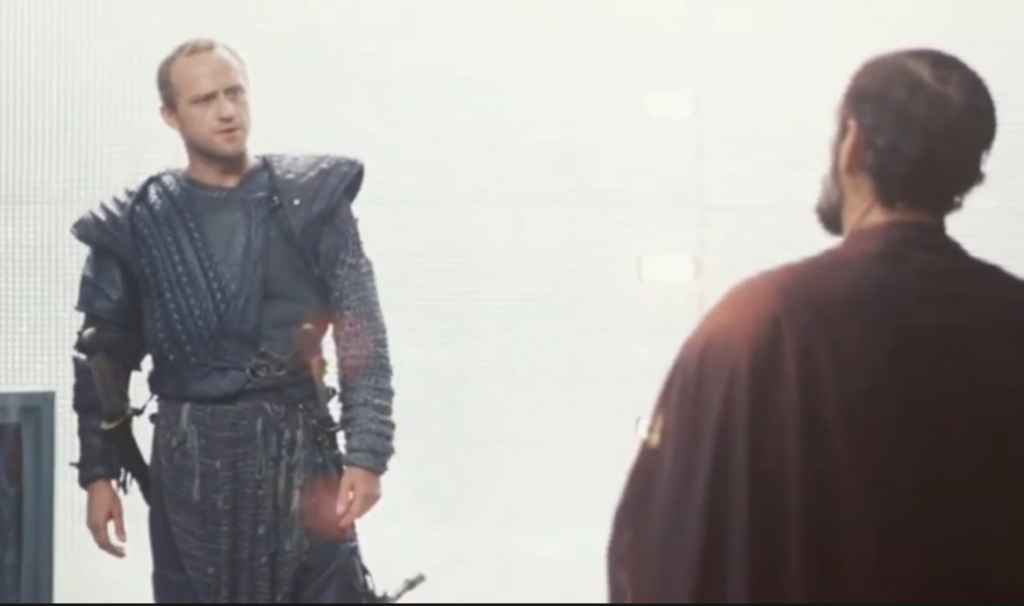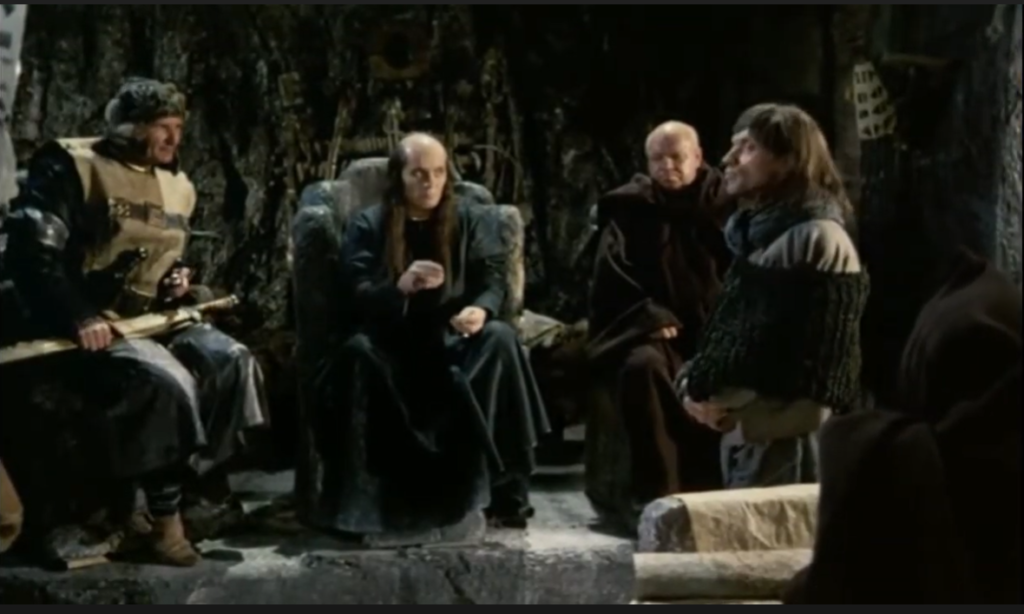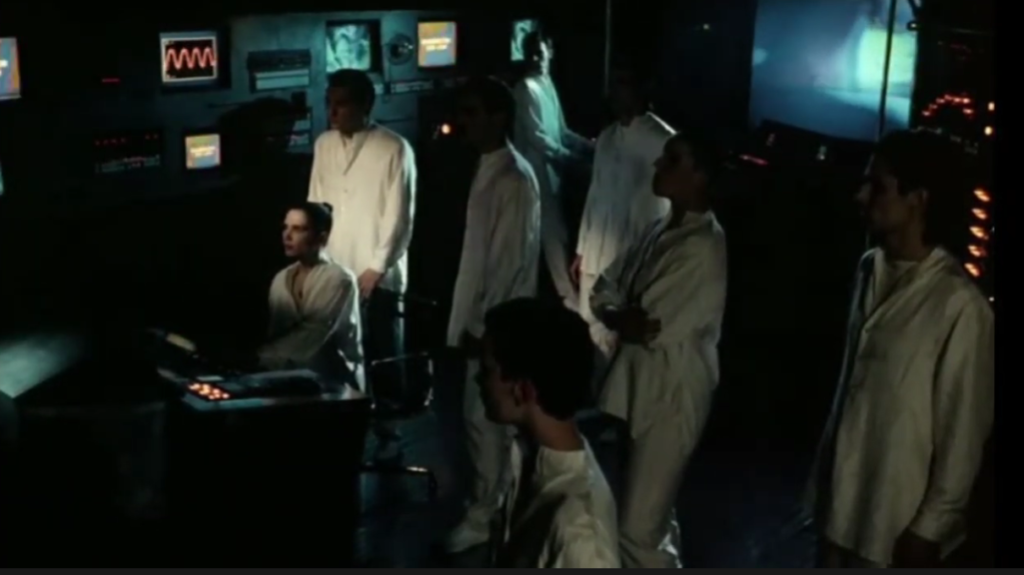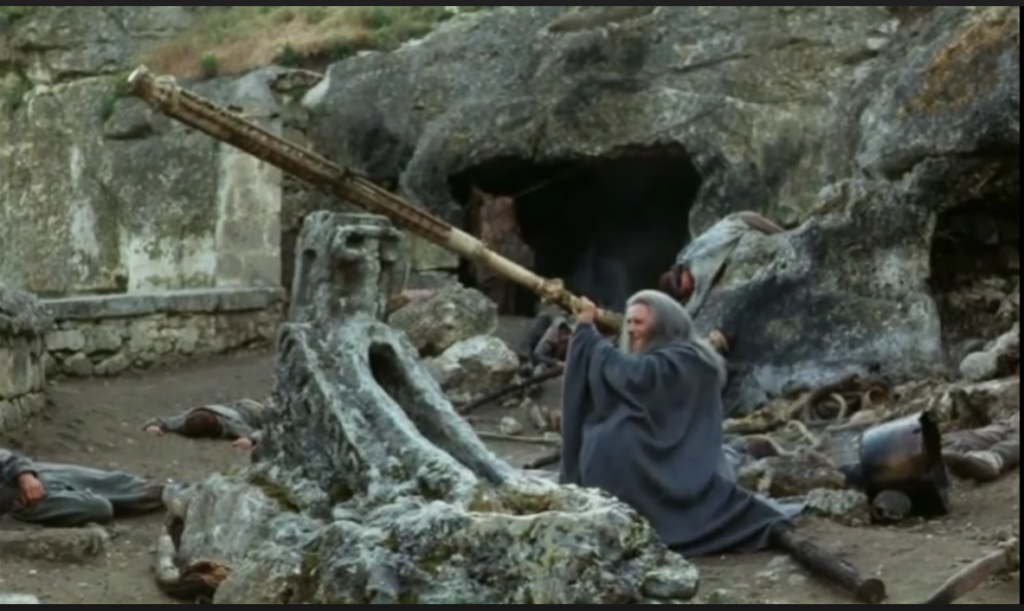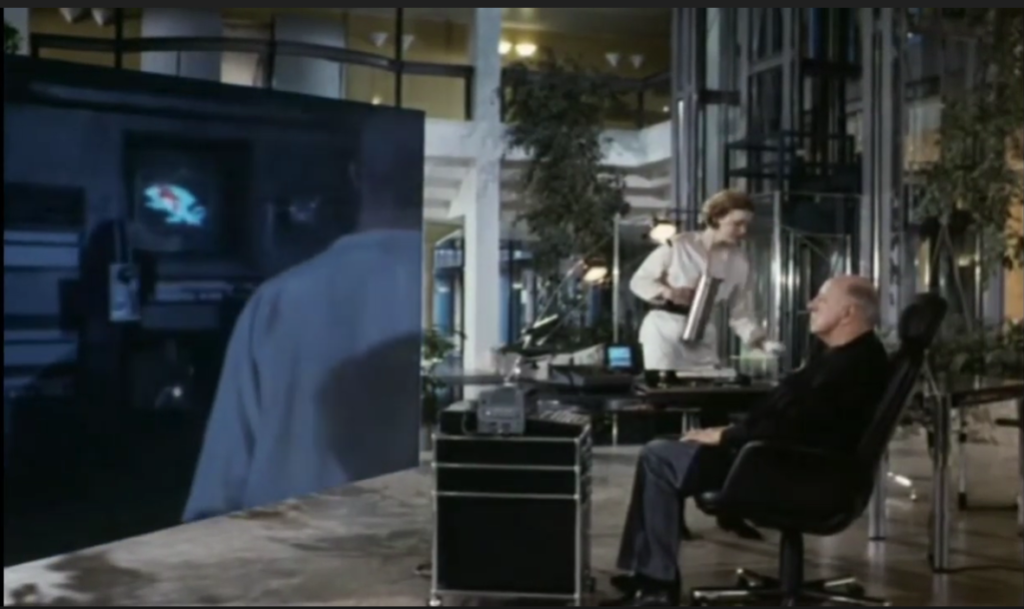-
#490 – Artemis 81 (1981)
Artemis 81 (1981)
Film review #490
Director: Alistair Reid
SYNOPSIS: An epic battle for the future of mankind is about to wage between Helith, the angel of light, and Asrael, the angel of death, Novelist Gideon Harlax finds himself caught up in the middle of this struggle, as the world becomes the battlefield…
THOUGHTS/ANALYSIS: Artemis 81 is a 1981 TV movie. The overall story concerns the battle for the future of mankind between the angel of light named Helith, and the angel of death, Asrael. At the centre of it all seems to be Gideon Harlax, an occult novelist who has detached himself from all emotion. This TV film is very slow-paced and meandering: the first act deals very much with exploring the human creative process and dealing with emotions, which as you might expect is a very broad and varied wander through a lot of different subjects. The film definitely requires your full attention to understand what is going on across its three-hour runtime, but even then you might not get the whole picture, as the themes it explores are very subjective and may not directly impact the story. There’s definitely plenty of depth to it’s exploration of its subjects, and it pushes the boundaries of what you might expect something produced in 1981, in terms of its discussion of homosexuality, suicide and sex. All in all, there is a lot going on in this film, and while it is all very deep and powerful, there’s little sense of pacing and being able to produce an overall coherent narrative: part of that is intentional, because it is very much an exploration of the messy thoughts and feelings of people, but the part of it which ties everything into this battle between the two angels never manages to achieve it’s goal I think.
The film starts off focusing on Gwen Meredith, and her chance meeting with famed musician Albrecht von Drachenfels, whom she wishes to play for. She wishes to explore the depths of feeling and expression in her music, but Gideon, her…friend? husband? I honestly couldn’t work it out; his indifference to getting emotionally involved with anything forms a stark contrast with the people around him. We see his discussions with a number of people baring their souls while he remains cold and unmoving, and it works as a setup that allows us to explore the themes the film sets out. The plot of the two angels battling it out is the most interesting aspect, but it’s typically dealt with so abstractly it’s quite difficult to follow. There’s a plot concerning Albrecht and his Mother, and how this relates to the two angels trying to either wake up their Mother or let her sleep, but again it’s left mostly open to interpretation. On a somewhat interesting note, the angel of light is played by Sting in his first big (?) acting role: luckily, his awkward portrayal works pretty well since he’s playing an angel that doesn’t really know how to interact with humans.
Overall, Artemis 81 is a very full-bodied experience that requires your full concentration to grasp both the overall story and the exploration of the issues it raises. The uneven pacing doesn’t help with respect to getting to grips with the content of the film either. The dialogue is extremely unnatural and metaphysical, leaving every conversation feeling like an exercise in philosophical discourse. Despite all of this opacity though, Artemis 81 does have the courage to push some boundaries, and takes the subjects it addresses seriously, and if you have the concentration to watch it uninterrupted for its three hour runtime, then it’s an interesting film of it’s time.
-
#489 – The Monster of Piedra Blancas (1959)
The Monster of Piedras Blancas (1959)
Film review #489
Director: Irvin Berwick
SYNOPSIS: The quiet Californian town of Piedras Blancas hides a dark secret: in the caves beneath the lighthouse, there hides an ancient monster that starts killing the residents of this sleepy town. Unaware of the monster’s existence, a number of the residents try to find out what is causing the killings…
THOUGHTS/ANALYSIS: The Monster of Piedras Blancas is a 1959 sci-fi horror film. Set in the small lighthouse town of Piedras Blancas in Southern California, the residents of the town find themselves being killed off one by one, with no idea who…or what is doing it. The film is paced like a typical monster movie of the time, with very little momentum at the beginning, and various murders until the monster’s reveal. The pacing is very slow in this one, and we only get the reveal of the monster about two-thirds of the way in, and everything before just involves these cast of characters that do little to distinguish themselves. The dialogue is pretty dull, and the character development doesn’t help make things exciting. I suppose this dullness reflects the setting of this sleepy seaside town, but it doesn’t really make for an interesting movie.
The film is an independent production, so it doesn’t have the backing of the big studios, but then again, those same studios were cranking out films like this at about the same quality, and the same runtime just over an hour long (this runtime was typically suitable for being shown at drive-in cinemas as part of double features, that were popular at the time). As such, it’s rather indistinguishable from a more ‘mainstream’ production. The on-location shots of the cliffs and the town do give it a more authentic feel instead of just relying on sets, so it does have that going for it. The cast of characters can easily be remembered by their roles, and their names are somewhat irrelevant: you have the doctor, sheriff, storekeeper, lighthouse keeper and the young couple. Each of them, as mentioned, fills out a fairly predictable role, and adds very little to proceedings. The young woman manages to show a lot of skin fairly regularly (even going swimming in the sea naked at one point), which would have been a little risqué at the time, and not something I’m sure a bigger production could have gotten away with.
The most notable aspect of this film is definitely the monster itself. Very similar in design to “The creature from the black lagoon,” (and designed by the same creator), the monster is based on a diplovertebron, which was a prehistoric creature that lived over three hundred million years ago. We don’t get too many shots of the creature in it’s full glory, but when we do it looks fairly decent for the time, with a scaly skin and water oozing out of its mouth. One of the other most memorable aspects of the film is the use of gore. In most Hollywood films, the killings would be done offscreen or without any blood or viscerality. When we get the full reveal of the monster, he is carrying the bloody decapitated head of his latest victim, which certainly comes as a shock, since nothing else has happened in the film up to that point, and also you just don’t expect to see that kind of gore in these films; also, the effect looks pretty convincing too. We get another shot later on of the abandoned head being walked over by a crab which is also has the same effect, but apart from that, there’s not too much to say about this film. The Monster of Piedras Blancas is a fairly forgettable film save for one or two moments that show off its horror credentials. It’s fairly short runtime means you can probably check it out without too much fuss though.
-
#488 – Alyas Batman en Robin (1991)
Alyas Batman en Robin (1991)
Film review #488
Director: Tony Y. Reyes
SYNOPSIS: Kevin is a comic book obsessed teenager that idolises the heroic exploits of Batman and Robin. When two men dressed as Batman’s enemies The Joker and Penguin, Kevin convinces his brother to dress up as Batman and him as Robin, in order to take on the criminals and bring them to justice…
THOUGHTS/ANALYSIS: Alyas Batman en Robin is a 1991 superhero comedy musical…parody…it’s a lot of things. The film centres around Kevin, a high school student that idolises the comic book adventures of Batman and Robin. His classmate, Jocson, prefers Batman’s nemesis The Joker, and when his uncle Paeng begins to start a crime spree, Jocson convinces him to become the Batman villain The Penguin (calling him the Paenguin), while he adopts the guise of his favourite The Joker. Seeing the reports of these criminal deeds, Kevin convinces his brother Kuya that they should become Batman and Robin to put a stop to the villains, to which Kuya initially reluctantly agrees. The film is basically a parody of the 1960s Batman TV series, which might seem a bit odd because both that the series was already light-hearted and a parody, and also that this film came out in 1991: twenty-five years after the series first started airing. I guess the series is a bit timeless, and there was the fact that the newer, darker Batman films were being released in the West at the time, so it doesn’t come completely out of nowhere. The film is basically just a bunch of setups with the Penguin and Joker doing a crime, and Batman and Robin trying to stop it. It’s fairly simple stuff, and provides a stable enough backdrop for all the other comedy stuff going on. In this regard, it does resemble the Batman film based off the 60s TV series, as that also had a similar setup and pacing. It’s all just a bit of fun, and doesn’t need to be anything more complex. The film is funny when it isn’t trying to be, through it’s low quality and haphazard production, but not too funny when it tries to actually be funny: the fourth wall jokes just come from nowhere, but there’s still a few lines that are somewhat humorous, and the film is generally entertaining in it’s “so bad it’s good” way.
The characters are all fairly standard, and it’s easy to follow who they are. The characters all seem suited to the costumed roles they take up: Kevin is youthful and optimistic like Robin, Kuyo is stoic like Batman, Jocson is eccentric like the Joker, and Paeng is scheming like The Penguin. Everything in terms of characters fits together quite appropriately. Catwoman also turns up, and the end credits features a musical number comprised of of many, many more superheroes, like Superman, Spider-Man, Wonder Woman and more. Why they weren’t used in the film itself is a bit puzzling to me; maybe they wanted to stick to focusing on Batman and Robin, but given how the film is a parody that breaks the fourth wall and has little consideration for logic, it seems odd that it would not use these character in some way, even as punchlines for a joke somewhere.
In case you hadn’t guessed, this is a film that does not have the licence or permission to use any of the characters that star in it. It exists in that strange sub-section of films that could only have been made and released in pre-internet times, when corporations who own these characters could not find these productions and sue them into oblivion. Obviously taking other people’s characters and trademarks isn’t good, but you can still have a soft spot for these blatant parodies that just have a bit of harmless fun with the property. The low budget production does however have some good points: the costumes are pretty accurate to the TV series it is based on, and they are colourful and fit pretty well. The Joker’s costume is pretty good: Jocson’s moustache is used as the Joker’s extended top lip, which is pretty clever. Even the Batmobile looks pretty good. The musical numbers are perhaps one of the stranger aspects of the film, but for the most part, the songs are pretty forgettable. The performances are, however, probably the most memorable parts, as they’re just so ridiculously over-the-top and flamboyant in a way that you would never expect these characters to act, that it’s certainly something you won’t see anywhere else. Overall, Alyas Batman en Robin is a silly bit of fun that is fairly empty in terms of story and production, but there’s enough competency and a willingness to play with the concept and characters that means it is at least entertaining enough to sit through.
-
#487 – Mantera (2012)
Mantera (2012)
Film review #487
Director: Aliyar Ali Kutty, Miza Mohamad
SYNOPSIS: At the Weston Technologies research lab, a prototype exosuit is destroyed and the lead researcher is kidnapped. The remnants are accidentally shipped to a high school student named Azman, a computer genius. Unsure of what has been delivered to him, he asks his friend to help rebuild it, and they find it is a motorcycle that turns into an armoured exosuit. As Azman gets used to this new power, he quickly finds himself caught up in a battle of good and evil for the fate of the world…
THOUGHTS/ANALYSIS: Mantera is a 2012 science-fiction film. The film opens up with a break-in at a research laboratory, where a prototype exosuit armour is destroyed. The wrecked parts are shipped accidentally to high school student Azman, who reassembles the suit with the help of his friend, and gets dragged into a battle for the fate of the world: that’s a pretty threadbare explanation of the whole plot, but also captures everything you need to know. The whole film feels like something you’ve seen before: every scene feels like it’s ripped off from a better movie. There’s superhero themes and adolescent drama which makes me think of the Raimi Spider-Man films above everything else. Nothing about the story is believable: the “accidental” shipping of a prototype exosuit of armour to a high school student (which the film handwaves away later as some form of destiny), and the appearance of the love interest, who straight away remarks she is a robotics expert and by amazing coincidence can help Azman to get the suit to work. Everything just falls into place a bit too easily, and makes the film always feel scripted, forcing everything to fit into the genres and movies the film is copying.
The characters are, like the story, unoriginal and barely develop out of their foundational tropes. Azman is the typical nerdy high school student, his friend is a mechanic who it just so happens can rebuild the parts Azman was sent, and as mentioned Deena plays the romantic interest, and just so happens to be an expert in robotics to help Azman get the exosuit to work. The characters are just so conveniently placed within the film to justify the narrative that there’s no room for any development. The “mentor” type character also fulfils their role exactly as you’d expect, including being killed off near the end to give the main character motivation. The two secret organisations fighting for control of the world being the “Alliance of Light” and the “Legion of Darkness” is just so incredibly reductive and bereft of imagination that it is barely worth mentioning. The villain is just some guy who does a “Dr. Claw” and always has his back to the camera: I don’t think he’s actually any of the other characters, so hiding his identity is redundant, and also the film ends without him even meeting the hero, instead just promising “revenge” in a sequel which we never got. Utterly pointless.
The effects and CG are all feel like a student’s university project: the exosuit is all CG, and moves awkwardly. Alongside this, the battles with it in are difficult to follow when the screen fills up with all the CG. The English audio dub is atrocious, with the characters all having very very cartoon-ish voices, like Azman’s best friend having the cool kid surfer accent, and the villain having the voice of a sandpapered throat. A lot of the sound effects are all stock sounds that you have probably heard many times before, and continue to add to that overall feeling of unoriginality and amateurism that constantly reminds you that you’ve seen everything done better in other films.
-
#486 – Christmas Twister (2012)
Christmas Twister (2012)
Film review #486
Director: Peter Sullivan
SYNOPSIS: Ethan Walker, a meteorologist, detects a tornado in Texas that he believes is a herald for much stronger tornadoes that are about to ravage Texas over the coming day. His wife Addison, a local news anchor, is initially sceptical, but believes him as more tornadoes start to appear. As the storms worsen, it is a race against time as Ethan and Addison try to get their kids to safety, and convince the local TV station to warn people to seek shelter…
THOUGHTS/ANALYSIS: Christmas Twister (Also known as F6: Twister) is a 2012 TV disaster movie about a twister at Christmas time (unsurprisingly). The film starts off introducing Ethan Walker, a meteorologist who detects a tornado in the Fort Worth area of Texas, which he believes is a precursor to a much more devastating series of tornadoes. However, his modelling, which accounts for climate change affecting the frequency of tornadoes, is not used by others, and has gotten him into trouble before by causing mass panic in Chicago when no tornadoes happened. He calls up his wife Addison, a news anchor at the local TV station, to warn her, but she is initially sceptical, but more tornadoes happen, and she is convinced to help him. The film revolves around the Walker family, as Ethan tries to get their kids to safety, and Addison tries to convince the news station that the danger is real and to get the public to seek shelter. This very typical made-for-TV disaster movie offers up a disaster of relatively mild proportions, with character arcs that are predictable and without interest. The premise of the main character having the only accurate weather modelling because his accounts for climate change is a bit absurd, and his explanations are loaded with jargon that makes little to zero sense. The typical three act structure is present, but doesn’t really build the story up to a climax, and just repeats the same set-ups throughout. Probably the worst thing about it is there’s no real scale of the disaster that everyone talks about: the death count is mentioned off-hand as being about 20-30, and there’s only around three to four on-screen deaths, with only one of those being an established character. As it stands, there’s no real sense of danger to the main cast. Also, there’s the fact that nearly every building has a tornado shelter so it’s hardly a mammoth task to get everyone to safety when they see a tornado coming. Ethan going to pick his kids up from school just seems a bit pointless when the schools will obviously have tornado shelters in an area that is frequently hit by tornadoes.
For a disaster movie, there’s not a lot of destruction to see: the film uses obvious stock footage of the aftermath of a tornado, but even that doesn’t look too bad. The images of people rolling away tires and other debris in the aftermath is just so contrived it’s hilarious. Most of the film also doesn’t take place during a tornado, rather it just deals in the aftermath of them, and the danger seems to mostly consist of just rescuing people from underneath rubble. The budget of the film clearly doesn’t have the capacity to have whole scenes be blown about and destroyed, and so we are left with some mild shaking and some really bad CG renders of tornadoes that don’t really look that impressive or strong: for example, you see people within about ten metres or so running away from the tornado, which at the strength it supposedly is, would suck them up right away. Again, this makes the tornadoes seem much less threatening than they are. The characters do have their own story arcs and purposes, which I guess is a positive, but it’s all very standard stuff that you’ve seen plenty of times before. None of the “jokes” are particularly funny: the one scene with tornado chasers barely escaping with their lives ending with the line “This is gonna make us a fortune on YouTube!” made me want to just walk away from this wreck.
If you’re looking for some Christmas spirit in this film, there isn’t really any. The film’s setting in winter is somewhat important to the story, as the tornadoes appear in December outside of tornado season due to global warming etc. but there’s no other sense of it being Christmas apart from one scene with a mall Santa. The weather is basically summer, and there are no Christmas decorations or anything adorning the scenes. All in all, it just feels like a typical low budget disaster film that fails to really portray any big scope of disaster, focusing instead on a fairly typical family that aren’t ever in any real danger (because they live in an area frequented by tornadoes, so there’s plenty of tornado shelters). Don’t ruin your Christmas spirit by watching this.
-
#485 – Trancers 5: Sudden Deth (1994)
Trancers 5: Sudden Deth (1994)
Film review #486
Director: David Nutter
SYNOPSIS: Jack Deth is still stuck in another dimension on the planet of Orpheus following an accident while time travelling. He learns that the only way to get back home is to get the “tiamond” from an ancient castle of terror. However, the trancers that Deth previously defeated are out for revenge…
THOUGHTS/ANALYSIS: Trancers 5: Sudden Deth is a 1994 film and the fifth in the Trancers series. The film picks up right where the last film left off…but not before showing an eight minute recap of what happened in Trancers 4. Given that this is a Full Moon Features production, and they are notorious for padding out runtime, this shouldn’t be surprising. Trancers 4 and 5 were filmed back-to-back, so it’s no surprise that they flow almost seamlessly into one another, but the problem with that is they don’t really distinguish themselves from each other, and it stretches out the premise far longer than it needs to be. Throwing Jack Deth into a medieval fantasy world was bad enough, but making two whole films about it really prolongs the agony. The film also decides to resurrect the main villain from Trancers 4 less than twenty minutes in (less if you don’t count the re-cap) and with relatively little difficulty, which further cheapens any accomplishment of Deth defeating him in the first film.
This time around, Deth must travel to the adequately named “Castle of Unrelenting Terror” to acquire the Tiamond (Time + diamond…get it?) and use its powers to return to his own world. So the film has this “quest” as its main plot point, which really just involves some minor inconveniences along the way. There’s some attempted character development between Deth and Prospero, the son of villain Lord Calihan who turned against his Father, but its all a bit arbitrary. Nothing is really explained, and there’s very little attempt at world-building. The resurrection of Lord Calihan from a painting of him almost spontaneously raises questions that are never answered, and just replays the conflict of the previous film with very little else at stake. The rest of the cast is about the same, and offers nothing new, and most of the criticisms of the previous film still stands.
The Trancers franchise was never a blockbuster franchise, but deviating from its sci-fi Bladerunner/Terminator roots to this weird medieval setting has removed the series from anything that made it interesting. The only really interesting feature of the film again is Jack Deth himself, whose wise-ass character is still somewhat likeable and entertaining in his portrayal, although he is not given any of the decent one-liners or retorts that made him so. The setting really isn’t appropriate for the character of the franchise; maybe if they really pushed the “fish out of water” setup there could have been some funny moments with Jack’s no nonsense attitude, but as it stands there’s not much that this film contributes to the series, and a further slide down in the franchise’s quality.
-
#484 – Grain (2017)
Grain (2017)
Film review #484
Director: Semih Kaplanoglu
SYNOPSIS: In a post-apocalyptic world where most of the planet’s soil cannot grow plants and food, the world is divided between the remnants of the cities, agricultural zones, and the inhospitable wastelands where nothing grows, separated by barriers that kill anyone that get too close. Professor Erol Erin, a seed geneticist, learns of a researcher whose thesis predicted the current genetic crisis, and sets out into the wasteland to find him and get answers about how to solve it.
THOUGHTS/ANALYSIS: Grain is a 2017 post-apocalypse film. In this post-apocalypse, we see that society is divided into the remnants of the cities, and the agricultural zones, each ruled by powerful corporations and elites. There is also the wastelands, which makes up the majority of the planet, and is populated by genetically incompatible people who suffer the harshness of the inhospitable environment. Separating them are giant energy barriers of some sort that kill anyone that touches them, maintaining the gap between the elites and the rest firmly maintained. We don’t get much more insight into the state of the world than this, but it’s setup is fairly familiar to the post-apocalypse setting, so it’s not really an issue. The cities are facing an issue where seeds and crops are unable to grow, which will turn into a full crisis if the situation worsens; the film gives some scientific jargon as to why this is happening about missing particles and stuff, but its all a bit superfluous. Professor Erol Erin, a seed geneticist, wants to find a man whose thesis predicted the crisis and how to solve it, but he has apparently disappeared into the wastelands. He illegally sneaks through the barrier and sets off in search of Cemil, who he believes can put a stop to the crisis. The film’s story is deliberately threadbare, in order to keep things open to interpretation in some way, and as such, situates itself in the vein of the more epic films like Tarkovsky’s Stalker. There are, however, a number of problems with this: the film is very front-loaded and gives a lot of time in the first half to explaining everything, and the second half in mostly silence, and the contrast splits the film in a messy way. In a similar vein, it feels like it wants to be one of those epic films, but at the same time appeal to a more Western sensibility. The runtime at just over two hours fits into a more (slightly longer) Hollywood film, but a bit too short for the longer epic films. Even as it is though, the film feels too long with very little reward for getting through it. The long scenes filled with silence are often good, but the film as a whole just doesn’t offer anything to think about or tie it all together. The film is based on a chapter in the Quran apparently, and while I can’t speak to that, maybe there’s a religious allegory in there that I’m missing. The message of the film seems to be that mankind is far too wasteful and careless about the environment and the world in which it lives, but to deliver that message in a film released in 2017 is hardly groundbreaking or impactful unless you have a really clever way to do it. Grain does not have that.
The film mostly centres around two characters: Professor Erol Erin, a scientist from the city, and Celim, a man who has abandoned the city for the wastelands. The two journey off into the wastelands together, as Erol tries to survive Celim’s eccentric actions and behaviour. Erol finds Celim in order to learn something, but what Celim tries to teach him is not what he expects: he is less about giving answers, and more about a process of care and concern for mankind and their environment. The long scenes of almost pure silence accomplish that in some way, with said silence taking the place of any answers as the pair traverse the wasteland. There are some scenes that stand out, but the film ultimately feels like it goes nowhere. The acting is fairly decent, and so are the minor characters, but we see far too little of them for them to have any impact, and just leave us with more questions.
The film is entirely in black and white, and again this is a deliberate choice to evoke the kind of epic film it wants to be. Is it necessary? Not really. The scenes in the landscape of the wilderness are very grand and empty, emphasising it’s silence and deadness. It’s clear that Grain has a vision of what it wants to be and how it wishes to approach its subject matter, but it is almost entirely obfuscated and mixed up in its execution, leaving very little impact overall. There are some good scenes in here, and again, clearly a message that is trying to be communicated while also being open to interpretation, but it seems every time it needs to be clear, it becomes ambiguous and vice versa. The film is trying to say a lot, but never pushes itself firmly into that epic category of long films that accomplish this. As such, the execution finds itself far behind where it’s ideas want it to be.
-
#483 – The Ninja Mission (1984)
The Ninja Mission (1984)
Film review #483
Director: Mats Helge Olsson
SYNOPSIS: Scientist Karl Markov is defecting to the west from the Soviet Union, and the CIA are planning to undergo the operation to extract him. However, the operation is interrupted and the Russians extract him instead under the guise of being the CIA agents. Markov is taken to what he believes is Sweden, but is instead a Soviet facility, where he is finishing the work he is undertaking. In order to undertake a new rescue mission. The CIA decides to send a team of ninjas to get Markov out, led by Agent Mason, and prevent the Soviets from completing Markov’s work and tipping the balance of power in the Cold War forever in their favour…
THOUGHTS/ANALYSIS: The Ninja Mission is a 1984 Swedish martial arts action film. Set in the depths of the Cold War, the film opens up with an operation to aid in the defection of Karl Markov to the west led by the CIA. Markov’s research will tip the balance of the Cold War into the favour of the Soviets, and so he wishes to defect to the west to maintain the current balance. However, the rescue mission is botched, and the Russians pretend to be the CIA agents and take Markov to a Russian facility to complete his work, which he believes is a UN facility in Sweden. The CIA mounts another rescue mission to get Markov out, with agent Mason leading a…team of ninjas to carry it out. The plot of the film is way more complex than it needs to be, and a lot of the runtime is devoted to explaining this overly-elaborate plot that constantly slows the film to a crawl and bloats the film with unnecessary exposition. What you really want to see in a martial arts movie is some martial arts and cool fight scenes (surprisingly), but the film just doesn’t deliver on it for the majority of the runtime. Things pick up in the last act, and boy does it overcompensate for the lack of action by making the climax utterly ridiculous with exploding henchman everywhere, but the first two acts of the film are really slow and misdirectioned such that by the time you get to the third ac, you may have already tuned out.
The characters are a typical bunch of 80’s action tropes, with the rugged action lead, the sole female character, the cold war setting, and so on. The plot concerning Markov and his estranged daughter really serves no purpose and only further complicates the film. The question that primarily arises from this film is probably why are the CIA undertaking operations using ninja operatives? As expected, there is no rhyme or reason for this, so you just have to go along with it. The martial arts stuff that we do see is fine, but there’s nowhere near enough of it.
The Ninja Mission is a low budget, low-end production; of that, there can be no doubt. The English dub of the audio is pretty bad, but that’s something you somewhat expect of martial arts films of the era, so it fits in, in a roundabout way. The car chase scenes aren’t too exciting, and there’s far too much standing around talking when there should be action on the screen. As mentioned, the film does pick up in the third act, when soldiers start being shot with syringe bullets (?) that make their heads explode, and there’s finally some martial arts on screen, but nothing that’s too special. The body count in this film is utterly ridiculous: lines of soldiers just casually get gunned down in single scenes, and its so overblown it’s quite funny. I’m not sure the film gets into the “so bad it’s good” category due to the problems mentioned with regard to the pacing which sucks a lot of entertainment value out, but some parts definitely stand out. The film has earned a “cult” status and strangely become one of the highest grossing Swedish films ever, by being redistributed across over fifty countries. Overall, it’s not a particularly memorable film, but fits into the 80s martial arts genre with its low/no budget and poor dubbing. Some parts are entertaining in a ridiculous way, and other parts are so bloated with dialogue it ruins any kind of pacing. It’s a mixed bag that be forgotten apart from maybe one or two scenes.
-
#482 – The Almighty Tycoon of the Ninja (2008)
The Almighty Tycoon of the Ninja (2008)
Film review #482
Director: Aris Kaplanidis
SYNOPSIS: Yakinthos, also known as the Ninja Tycoon, is battling evil corporations and cyborgs in order to avenge the death of his parents and wife. he must battle an evil conspiracy to destroy him and save the world when he gets a chance…
THOUGHTS/ANALYSIS: The Almighty Tycoon of the Ninja is a 2008 Greek comedy martial arts film. From that description alone, you can probably guess this film is going to be bonkers. Let’s try and explain the story here: Yakinthos is a tycoon whose parents, themselves tycoons, were killed, along with his wife (this guy can’t catch a break can he?). Now it is Yakinthos’s turn to get revenge, and he is prepared to go through an army of robot ninjas to get it. That is basically the story…I think. This is only the second film I’ve reviewed which I could not find English subtitles for (the other being the Soviet version of A Connecticut Yankee in King Arthur’s Court), so the intricacies of the plot are lost on me; but I’m pretty sure there really aren’t any intricacies, as the film is very much a straight up homage and parody of classic martial arts movies, and all you need to know is who the hero is, who the villain is, and that the hero is going to trash an army of robot ninjas. There’s some semblance of a typical three-act structure that gives the film a decent flow, and there’s plenty of action and silly visuals to be entertaining. It’s never going to convince you it’s not just a student film filmed with a handheld camera, but there’s some gags and such that come out of nowhere that will fully take attention away from that; like why does Jesus suddenly turn up in a scene? I’m not sure even if I understood the dialogue I would be able to make sense of it (and to be honest, it’s still pretty funny without the explanation).
The film constantly feels like a student movie; not only with the film being mostly shot on a handheld camera, and in abandoned warehouses and people’s homes, but also in the fact a lot of the cinematography is a mixture of techniques film students probably learn, and the film just throws them all in to demonstrate they can do them. This would perhaps be an issue in a film that was intended for mainstream audiences or had a serious story to tell, but The Almighty Tycoon of the Ninja is just a bit of harmless fun that can get away with doing anything and everything it wants. It’s also worth pointing out that the choreography in the fight scenes is actually pretty tight. It does feel a bit too scripted and fake sometimes, but the whole film feels that way, and that’s part of it’s appeal. Also the film uses famous songs it clearly does not have the licence or permission for, and I can appreciate the film just doing whatever it wants without any regard for its own limitations.
Overall, it’s hard to be too harsh on The Almighty Tycoon of the Ninja: it sets out to make a very certain kind of film with no budget, and given that initial framework, it pulls off something absurd, over-the-top and fairly entertaining, even if it’s difficult to work out what is going on. The plot is pretty simple, but follows a trajectory and has enough structure to keep the film together. The characters are fairly distinguishable, and have enough personality to identify them. Despite the lack of budget and equipment, there’s a hidden degree of competency in its cinematography and choreography, but it definitely feels like a student film that’s showcasing a range of techniques without much curation. No matter the criticisms that be brought up though, it always knows that it’s a bit of satirical, silly fun that isn’t afraid to go overboard without fear of breaking all those filmmaking tropes and techniques it clearly knows. It’s not a film you need to watch, but if you somehow find yourself sitting through it and you’re not looking for anything serious, you can probably enjoy its humour even without the subtitles.
-
#481 – Hard to be a God (1989)
Hard to be a God (1989)
Film review #481
Director: Peter Fleischmann
SYNOPSIS: On an alien planet much like Earth, a society is undergoing a period of oppression similar to that of the middle ages of Earth. A group of scientists have been sent to observe this society, and study this event as it unfolds, with strict orders not to kill. Richard, one of the scientists, heads into the city of Arkanar as an observer, but he and his fellow observers find that staying out of the troubles of the inhabitants is more difficult than anticipated, and brings them face-to-face with emotions and feelings that humanity itself has lost…
THOUGHTS/ANALYSIS: Hard to be a God is a 1989 science-fiction film based on the 1964 novel of the same name. The film is set in humanity’s future, on an alien world where the civilisation is undergoing a period similar to Earth’s middle ages, and the rulers are cracking down on any inventors, artists, or scholars which may result in society moving into a Renaissance-era progression of society. In orbit above the planet, a human ship observes the settlement of Arkanar, and monitors a group of observers they have sent down to the planet. One such observer, Richard, takes on the identity of Rumata, a nobleman who was unknowingly to the citizens of Arkanar killed some time ago. With this identity, Richard/Rumata is able to observe a lot of the city freely, and also attempt to safeguard the scholars etc. that are being hunted. The plot centres around “Rumata” as he mingles in with the various residents of Arkanar; from the royal court to the common man, and the plot hinges on Richard becoming aware that it is impossible to remain neutral or observant when he is covered in the dirt of the city and the unguarded emotions of its people. The film proceeds very slowly through this scenario, and it is a very simple one that fills the two hour runtime by slowly immersing the viewer in the mess of the world that the humans are sent to observe. It is difficult to follow at points, but also that seems to be the point; that the struggle of daily life on this planet doesn’t neatly resolve itself into a smooth narrative.
Unlike the 2013 adaptation of the novel, here we get a glimpse of the spaceship and the state of humanity. It seems that humanity has “evolved” to a point where it has risen above the feeling of emotions, and as such look down upon the state of Arkanar as primitive and very much behind them as a society. As the film progresses, some of the scientists, who watch through a video feed implanted in Richard’s eyes, begin to feel emotions they have never experienced. It’s not the main focus of the film, but it is a neat little touch that shows how being a detached observer, as a human being, is not as easy as deciding to throw away your emotions, and that they always have the possibility of returning without control. The characters become familiar and involved with the story as the viewers do, and so when it is time for them to get involved beyond the observer role and help out the people they have lived among. I wouldn’t say it pulls this off in a perfect way, but it does enough to build up the story and setting to make this pay off. There’s some characters which don’t have that serious tone and “feel” like particular characters (the King, for one), and so I’m left wondering just how serious a viewer will take the film with some of these very stereotypical character tropes and bizarre hairstyles.
Production-wise, the film is fairly well put together: Arkanar has a distinct look and feel to it, even if its aesthetics of being shot in a desert seem very reminiscent of a lot of other films. The sci-fi elements are not the main focus, but the props and sets we do see are serviceable, if unremarkable (again, they are not the focus, so this is a good thing). With regards to making the environment look like a dirty, medieval setting, there’s effort put into getting the scenes and props right, and there’s a certain level of dirt but it does feel a bit uneven. Sometimes everyone is a bit too clean, and there are some moments when the gore comes out of nowhere and instantly unsettles the mood. I can think of two such instances: a decapitated head, and one part where a live pig is cut open and killed. I really hope that pig was a prop, but it definitely looked real…anyway, maybe I may be judging it a little harshly in this regard because the 2013 version does such an elaborate job in making the film visceral and filthy that this version can only look bad by comparison. The soundtrack, with it’s synth-heavy sounds, definitely places it in a certain moment in time, and while it’s not bad, it certainly ages it. Overall, Hard to be a God is a fairly average film with some stand-out and memorable moments, but they are few and far between across the two-hour runtime, and the plot ultimately fails to put down roots to dive the film direction and purpose. Not a bad film, but in terms of fitting the mould of cinema, it’s going to be a bit difficult for some viewers to get into.
